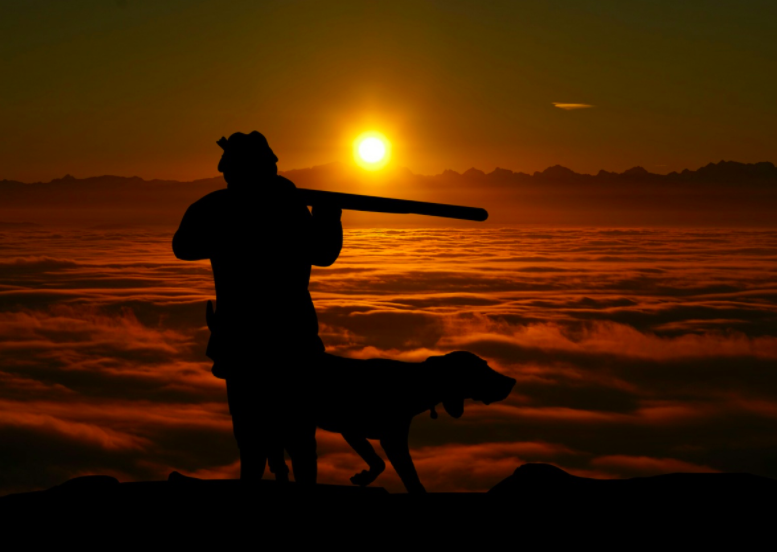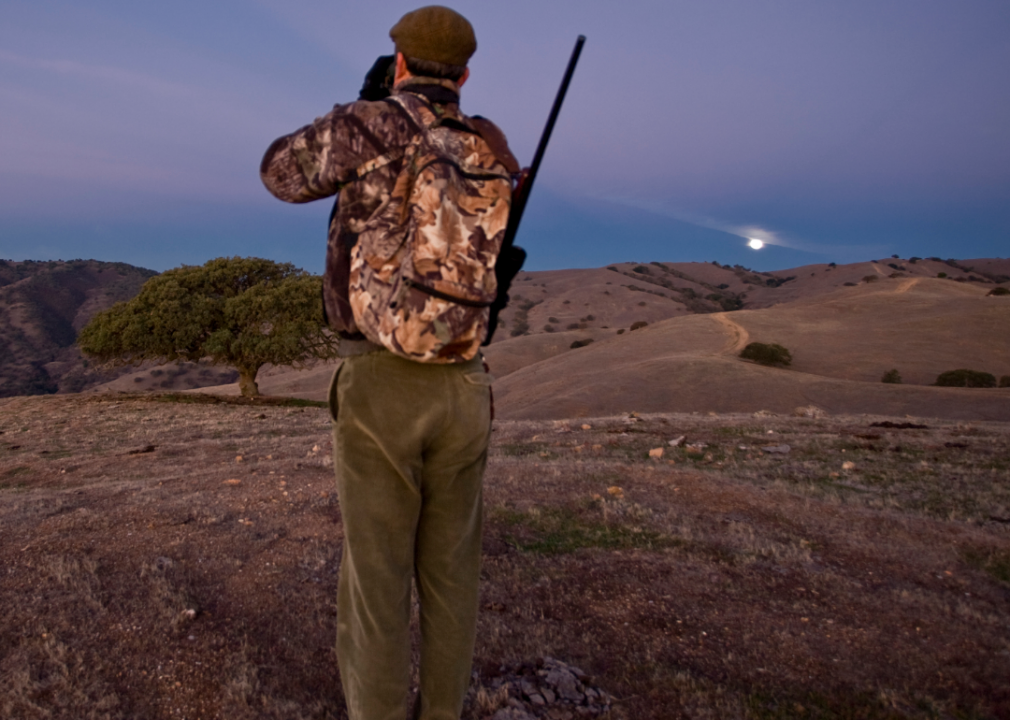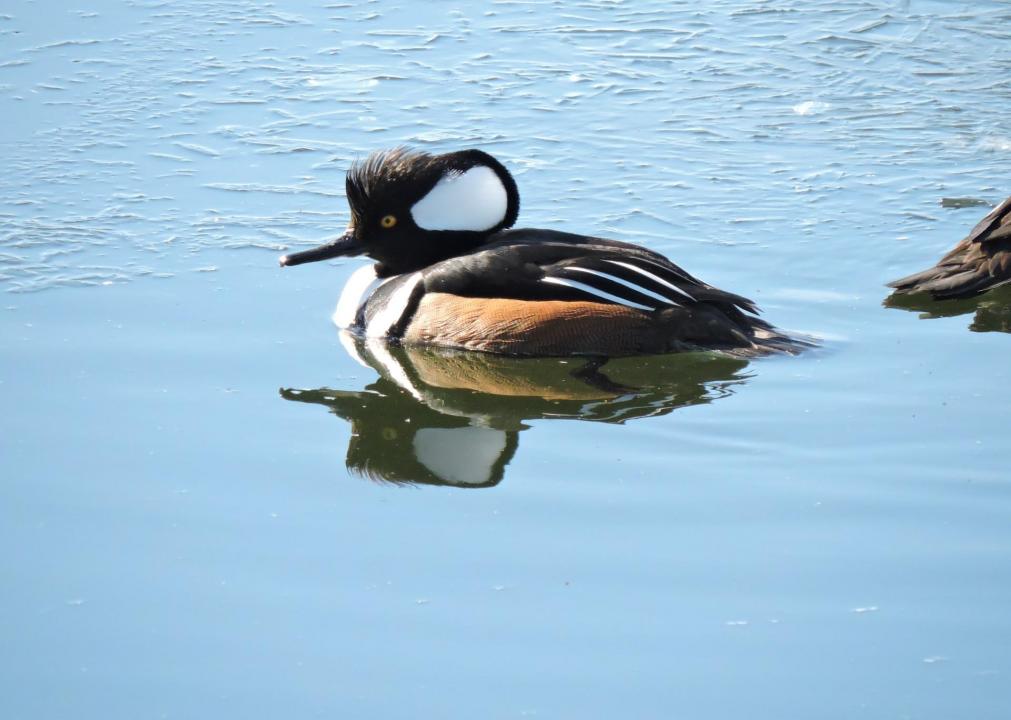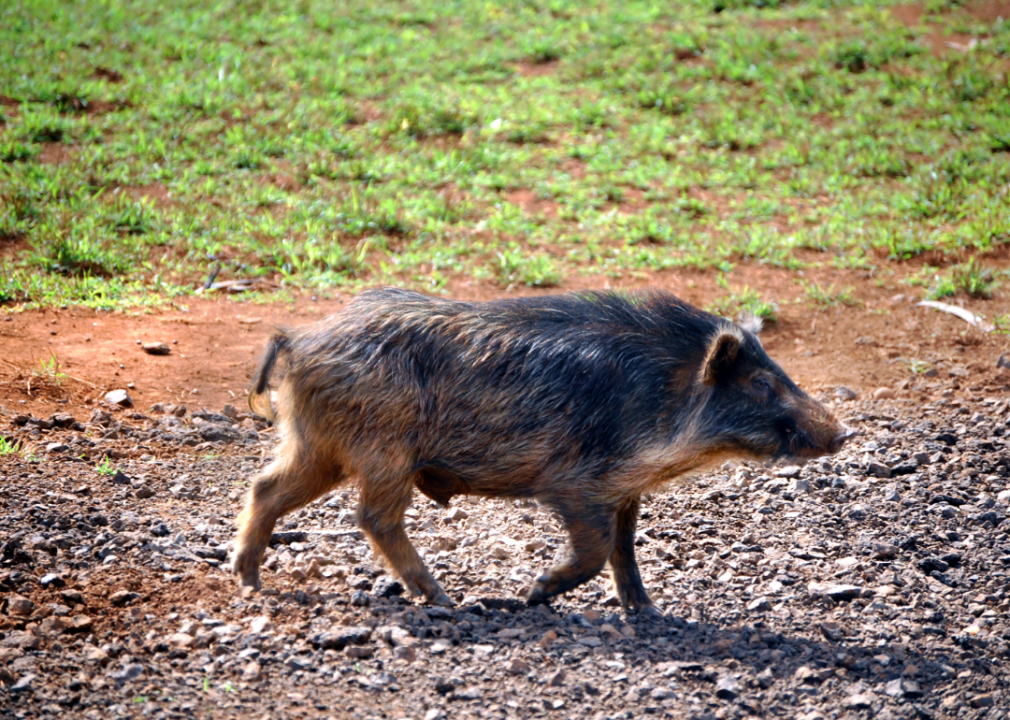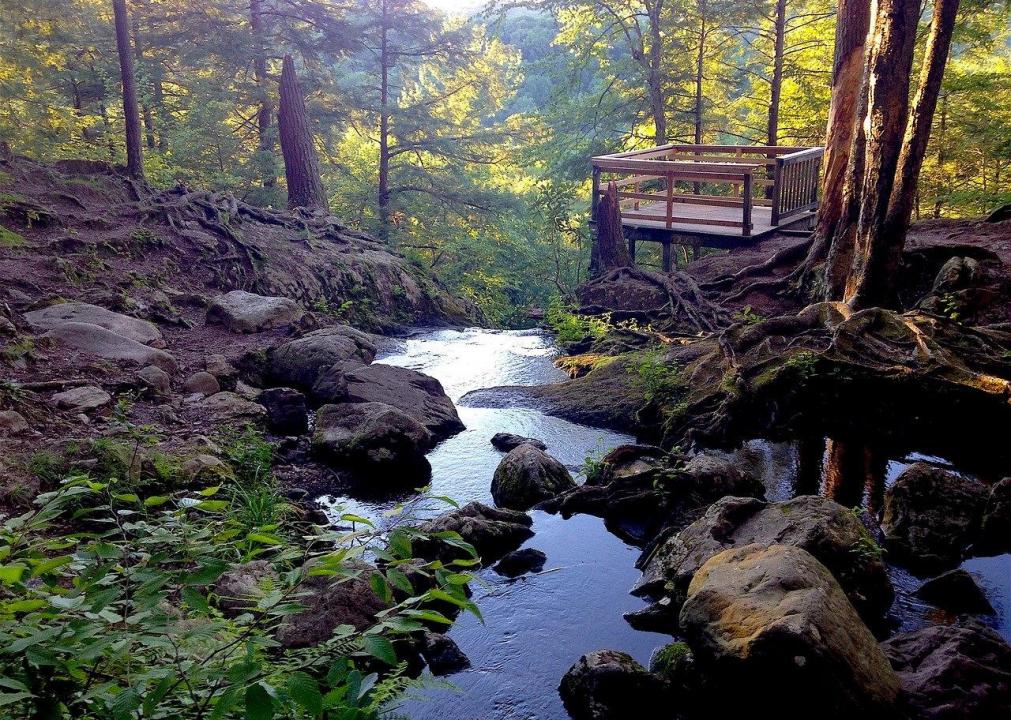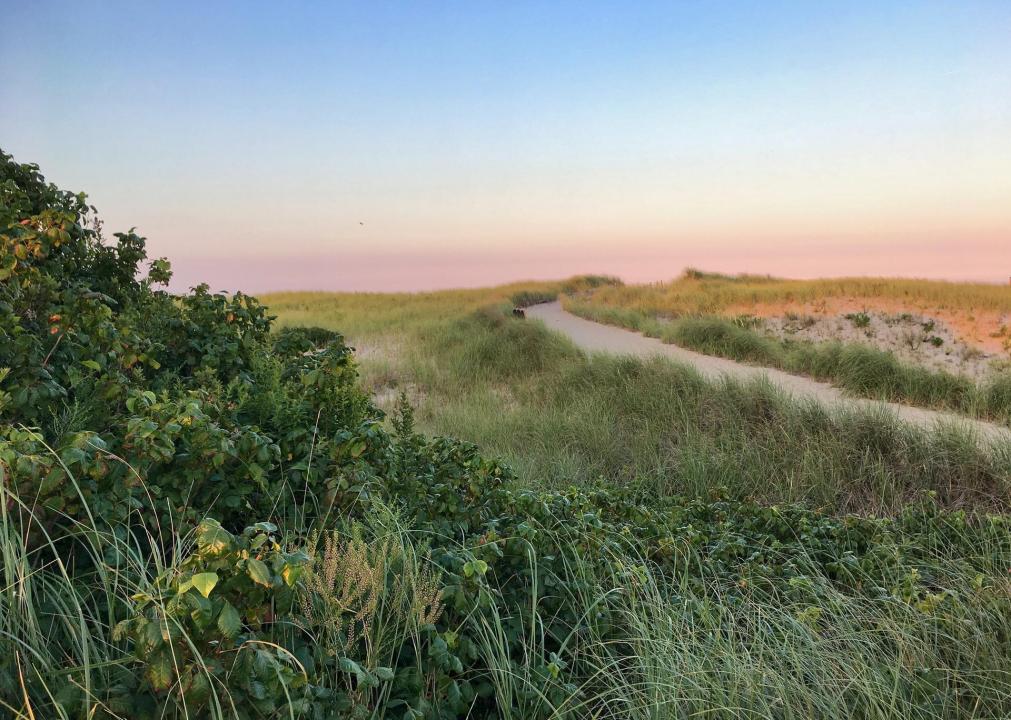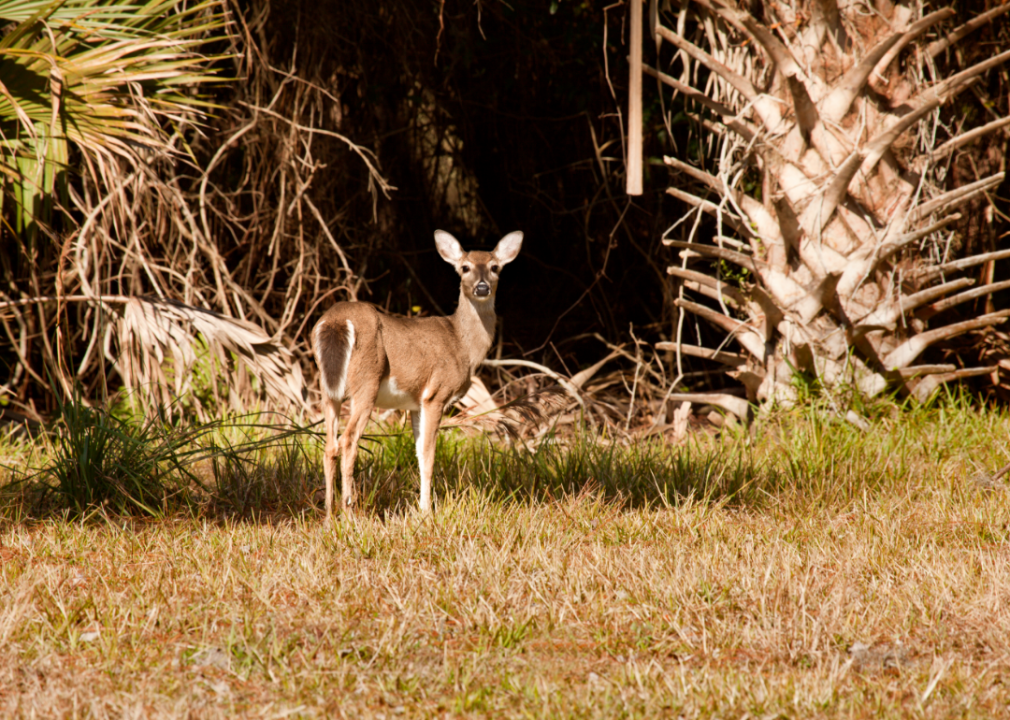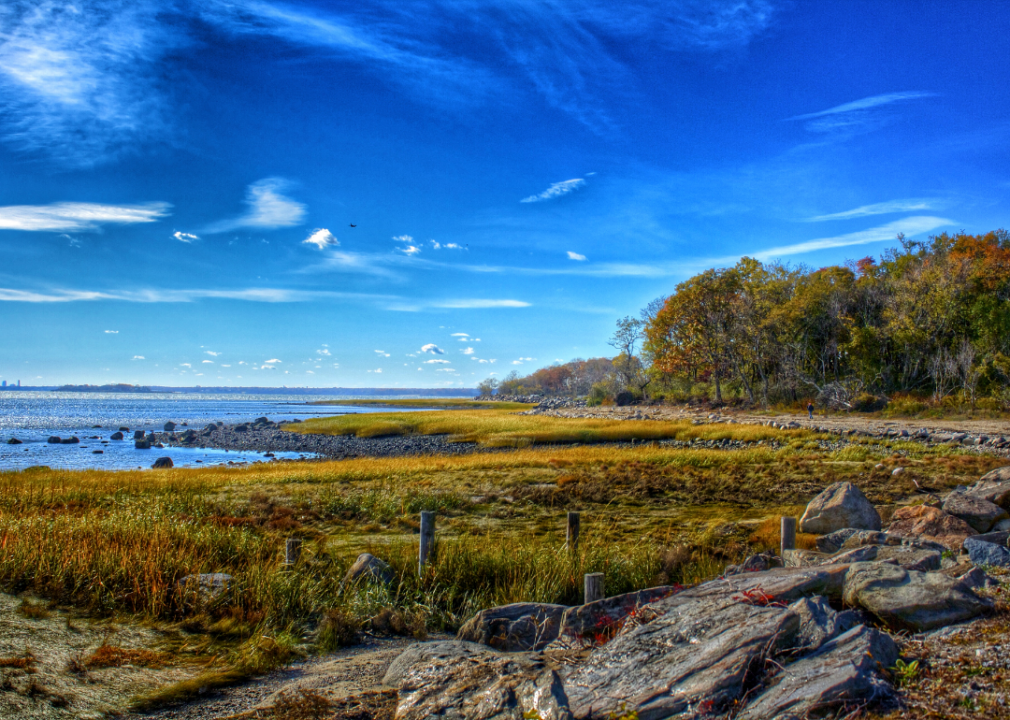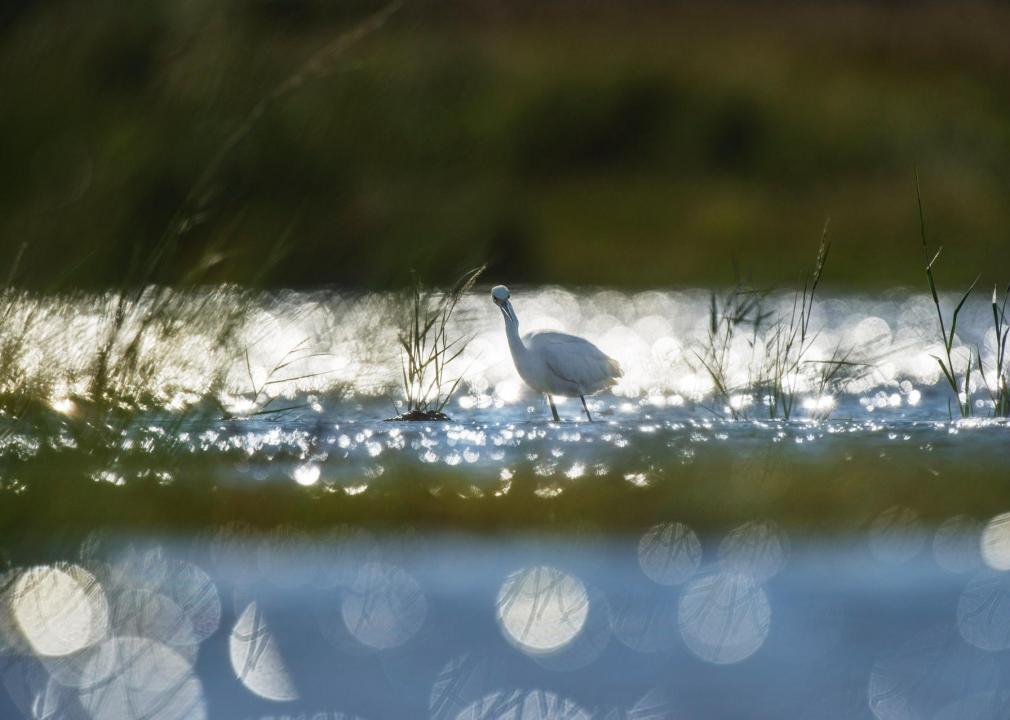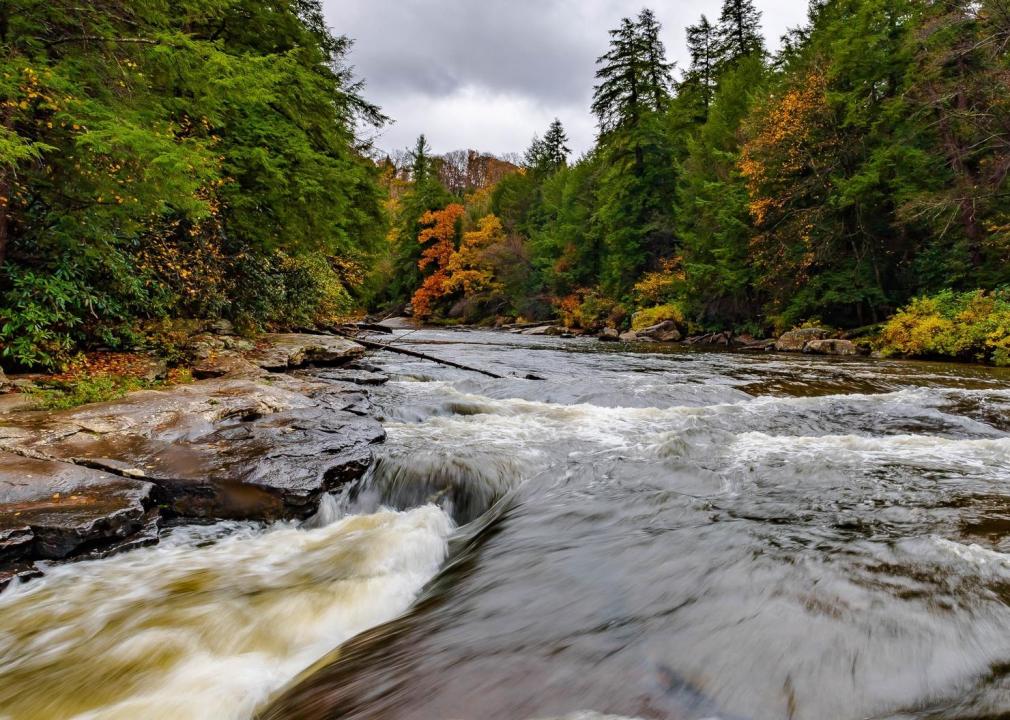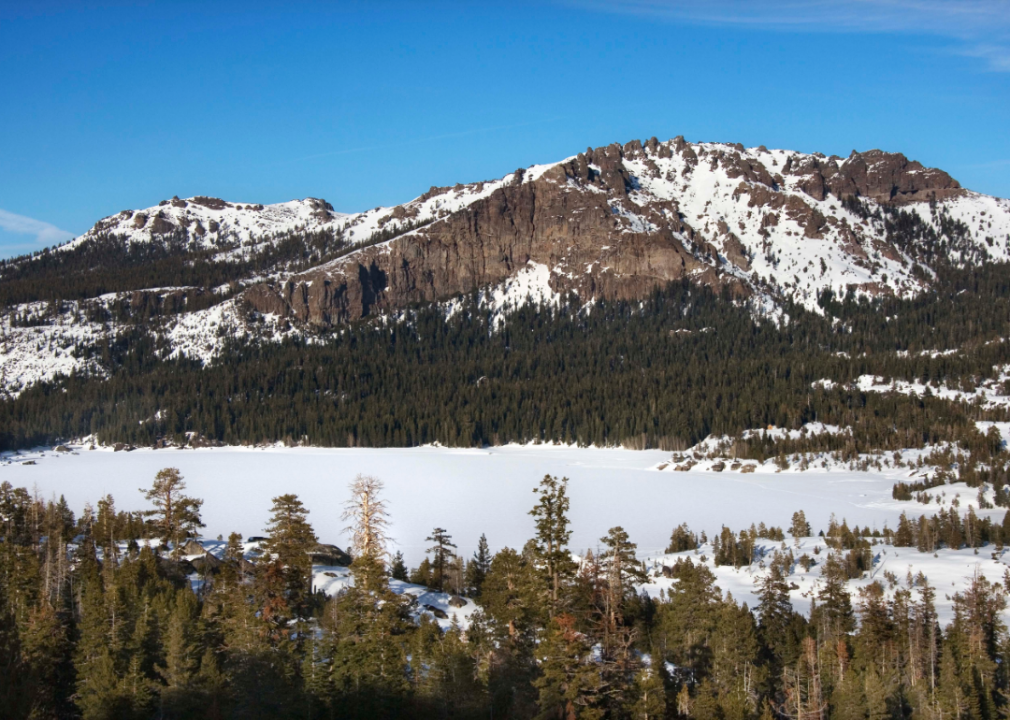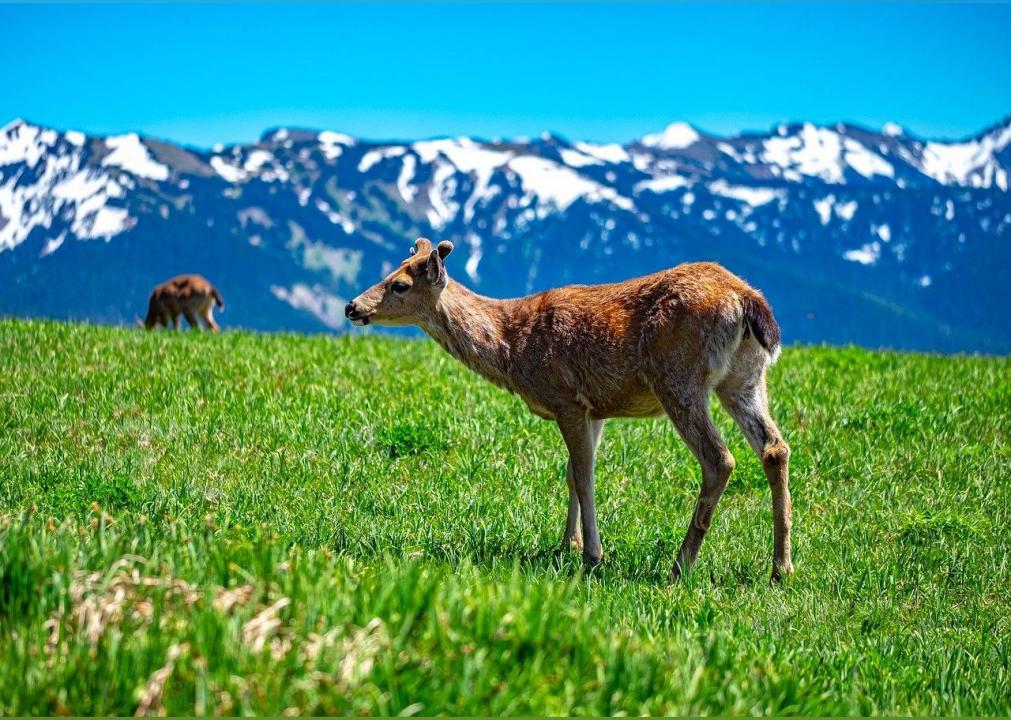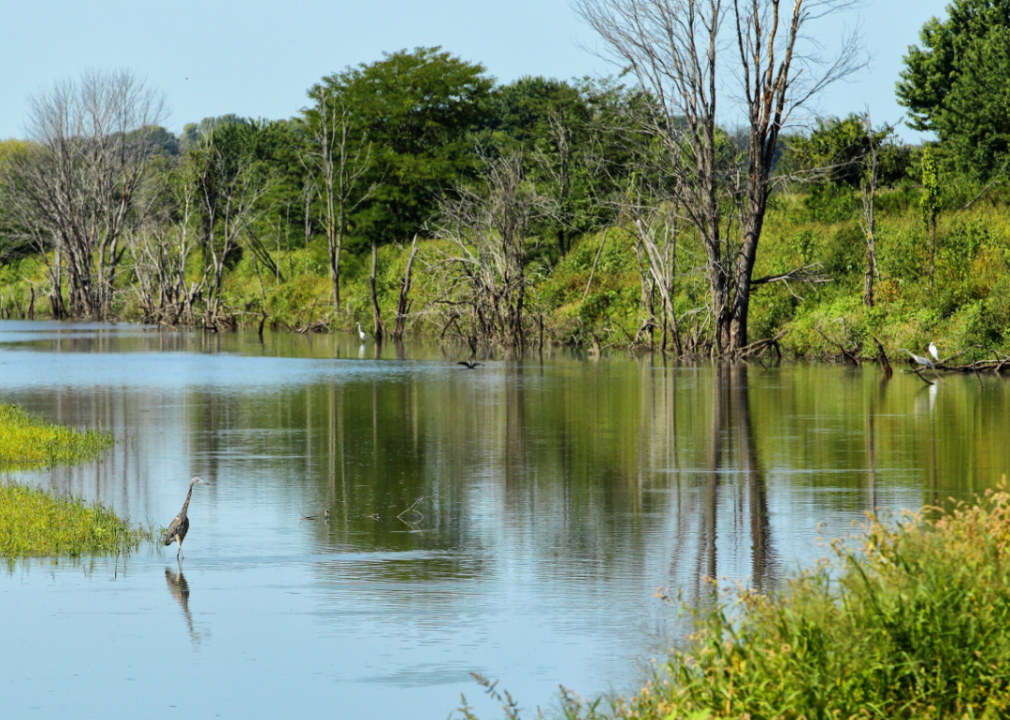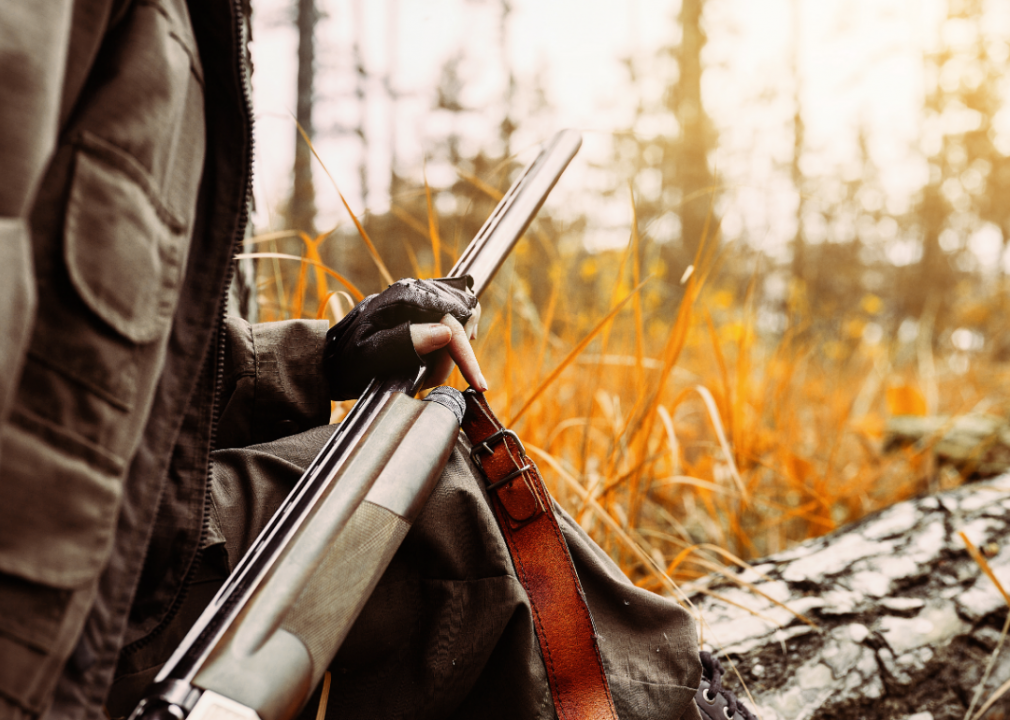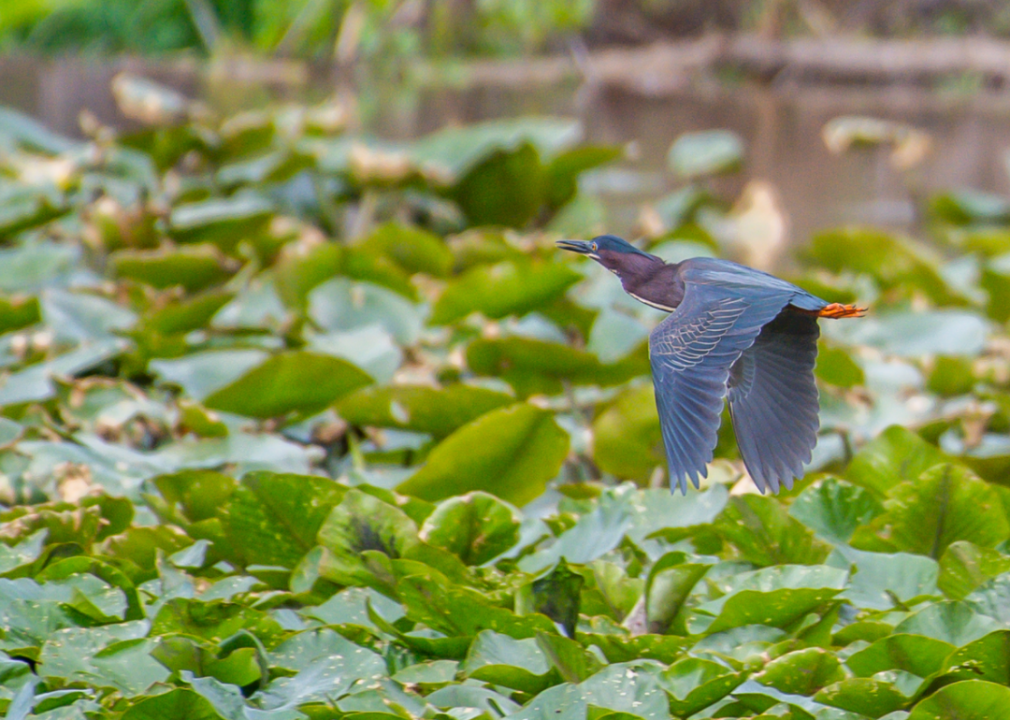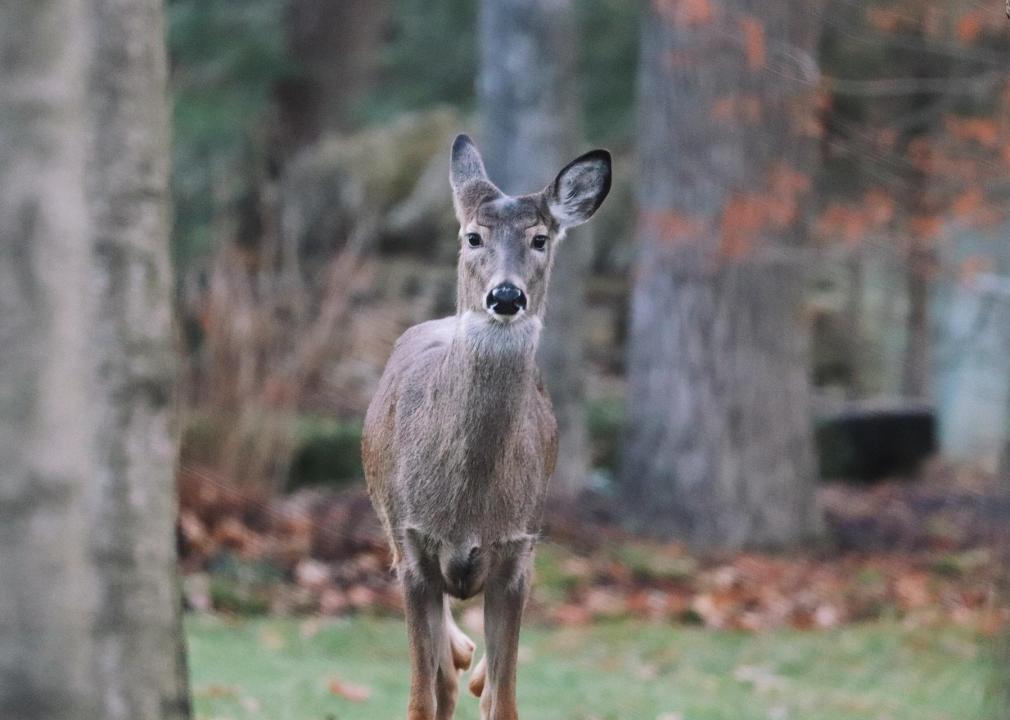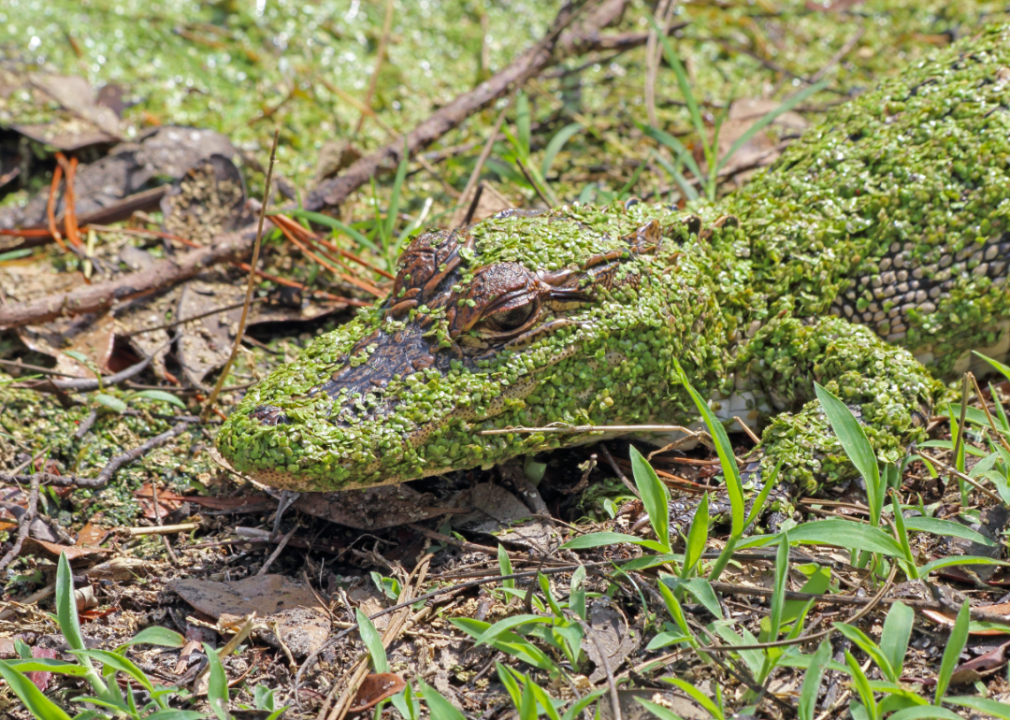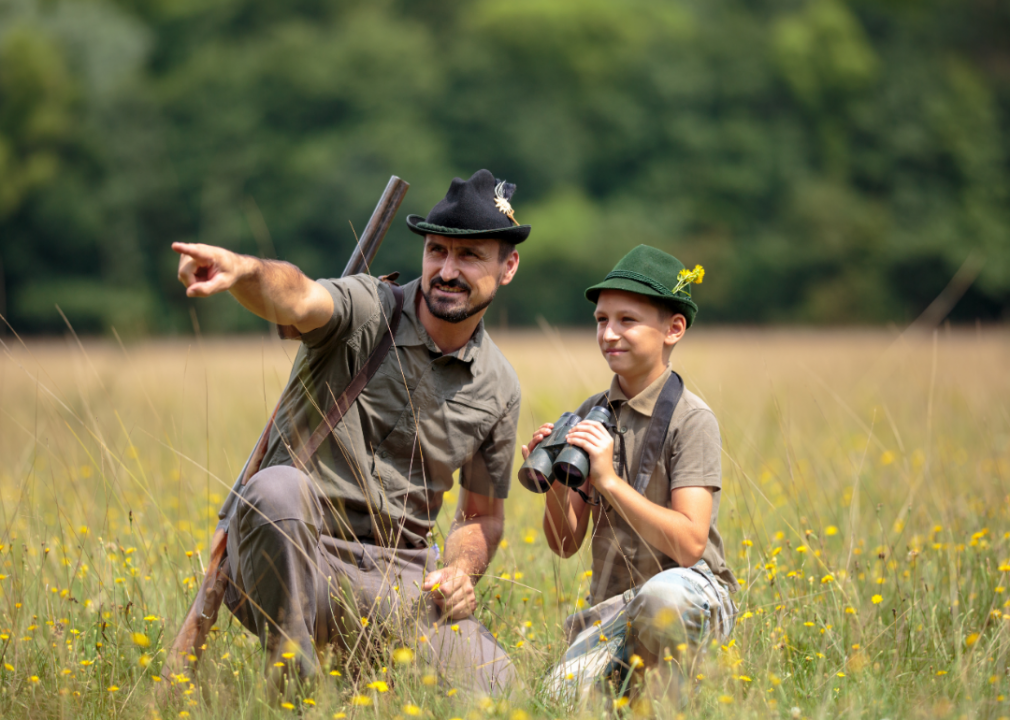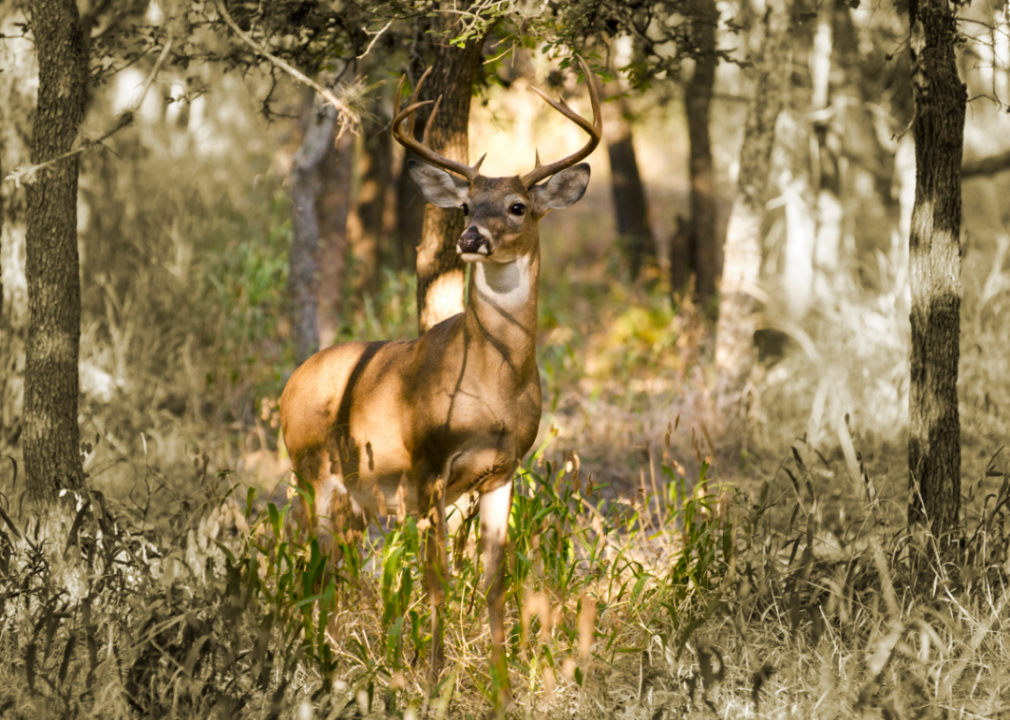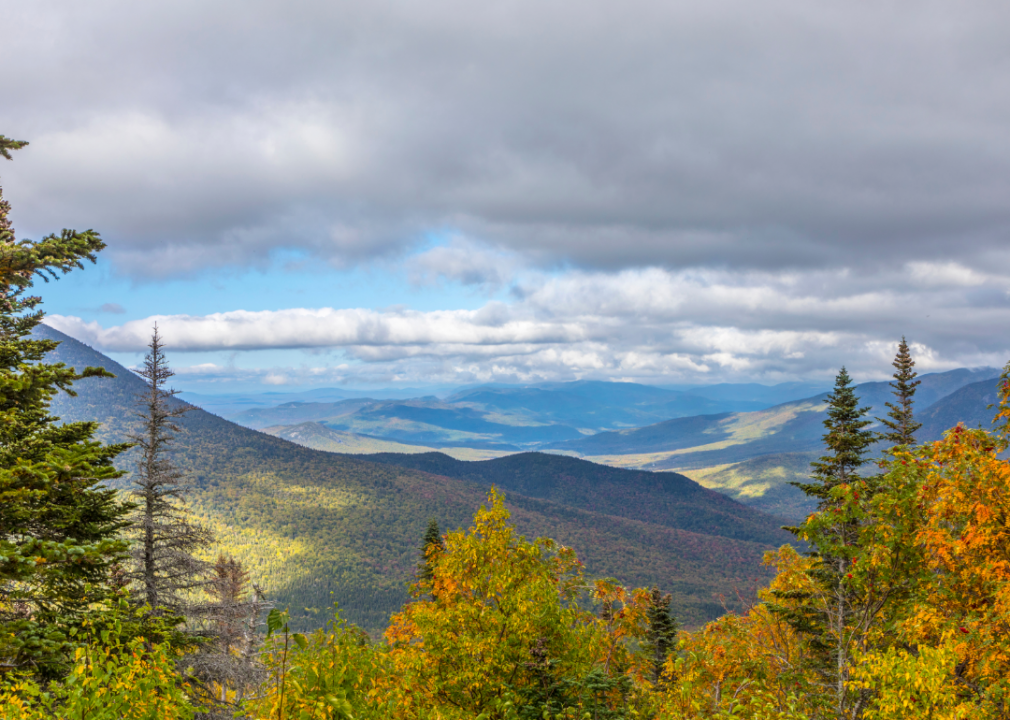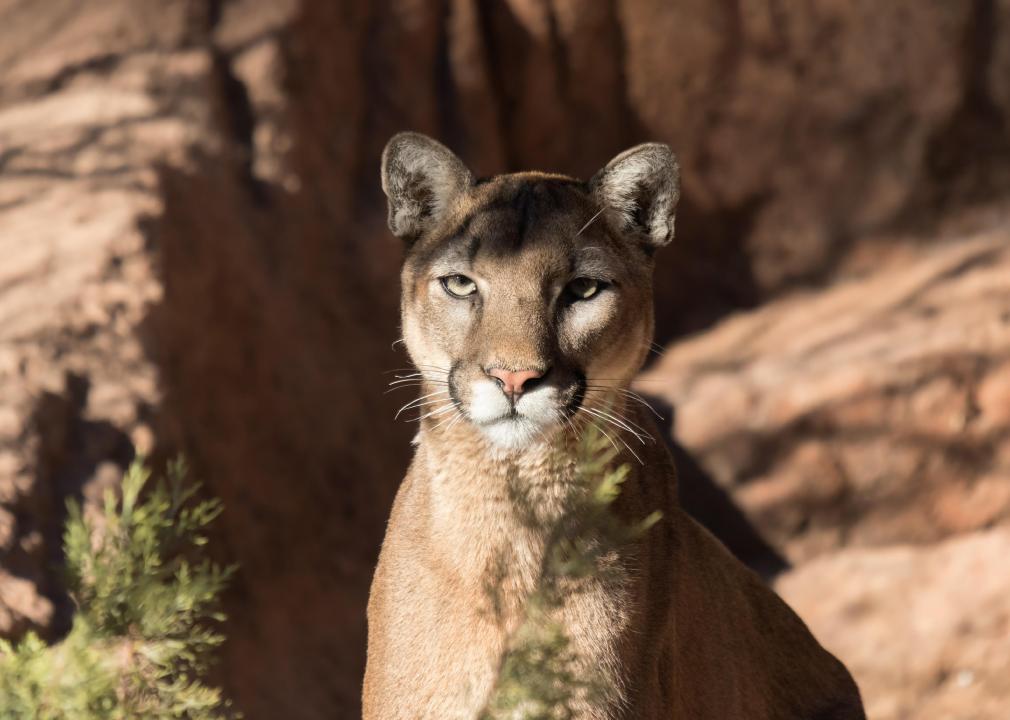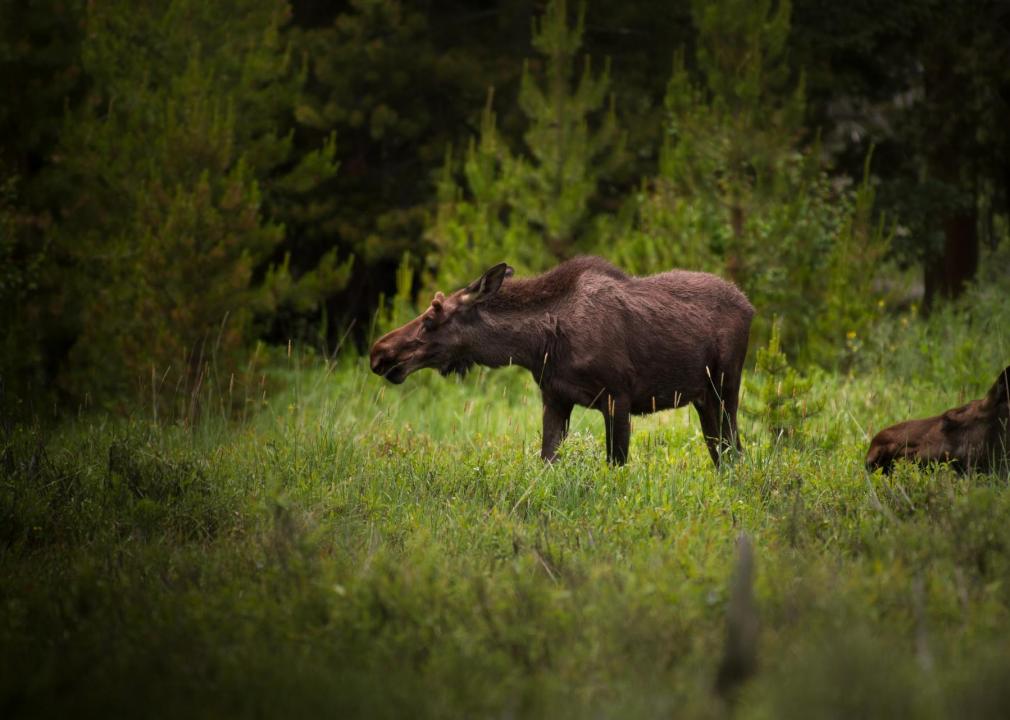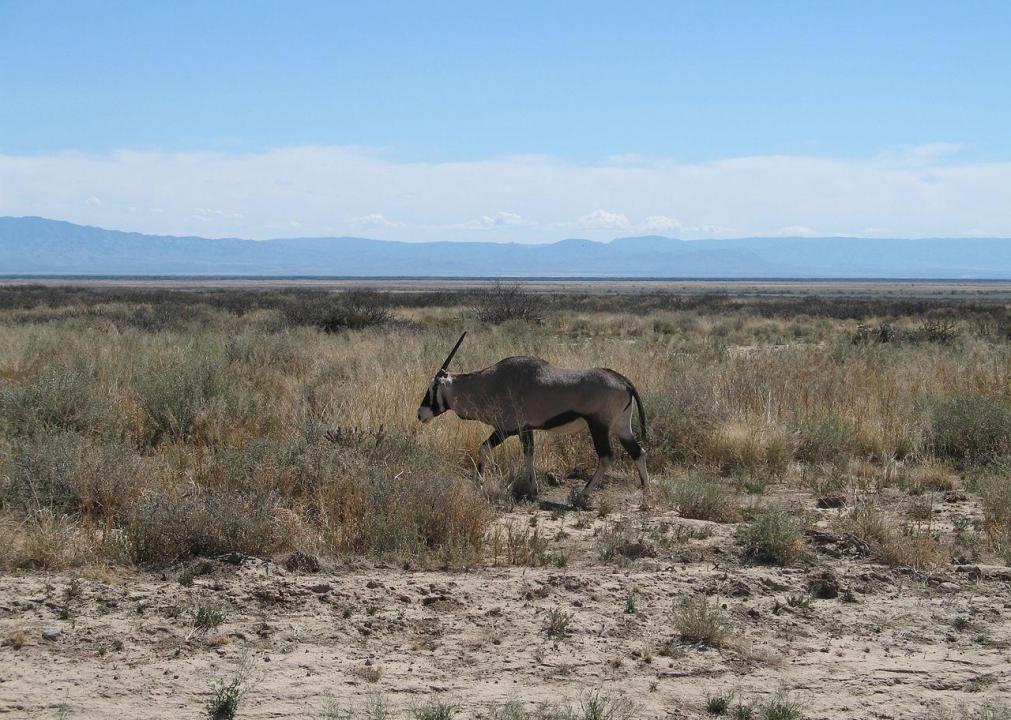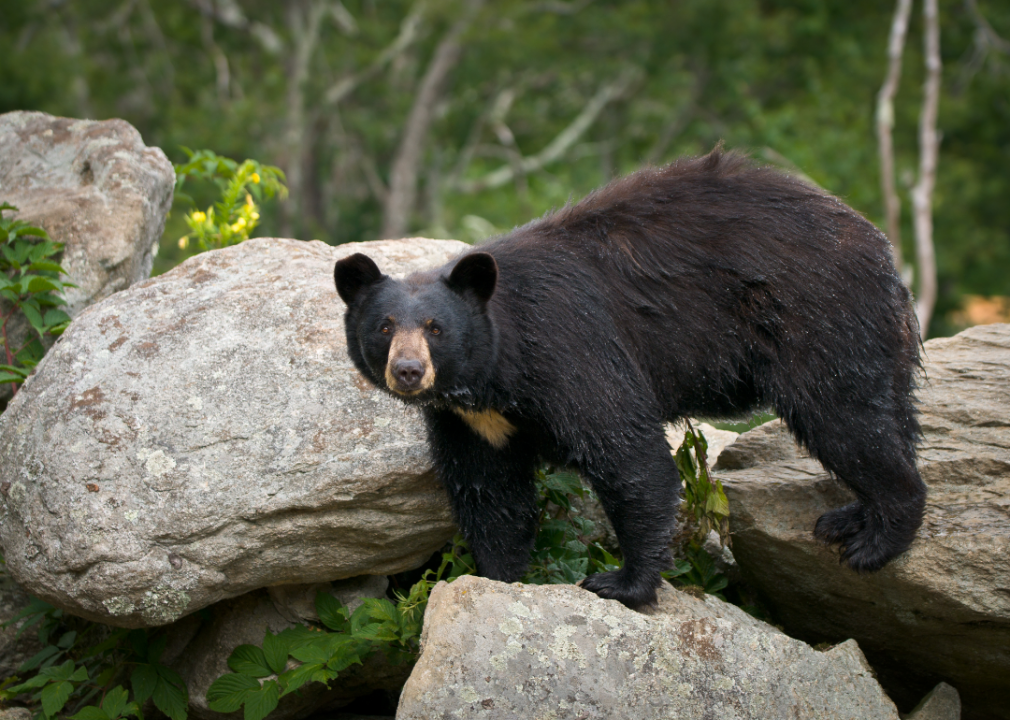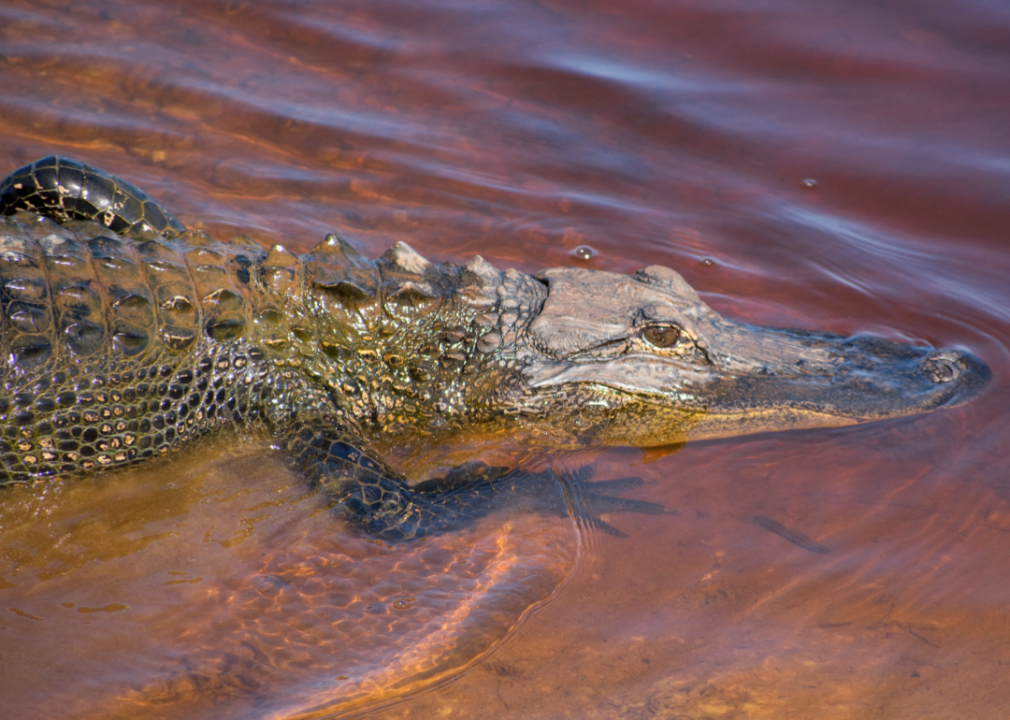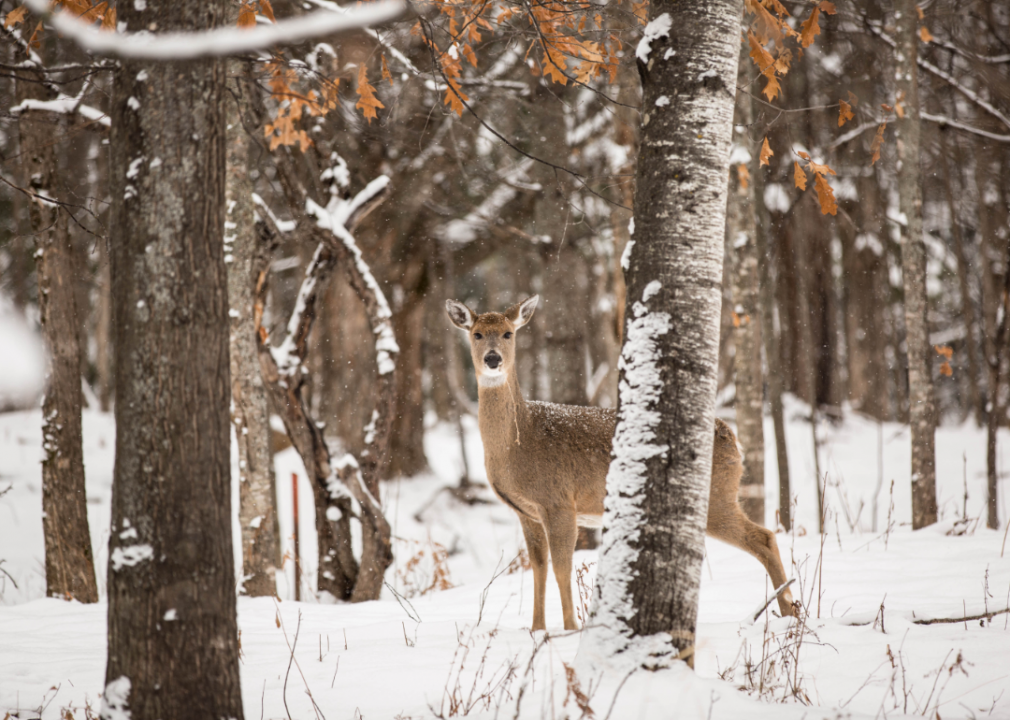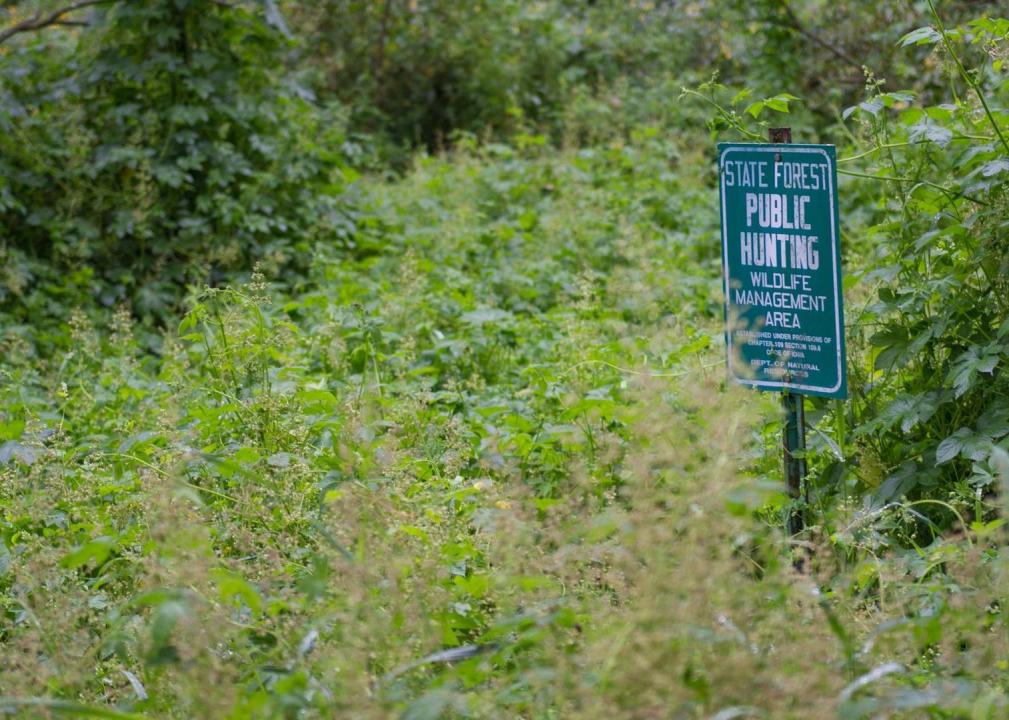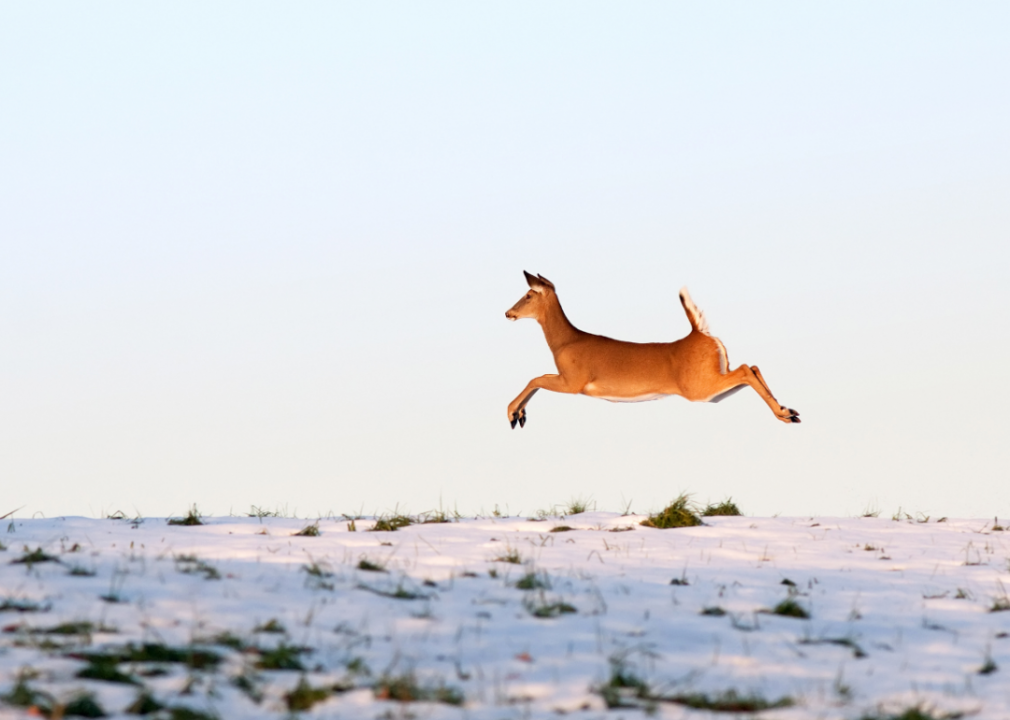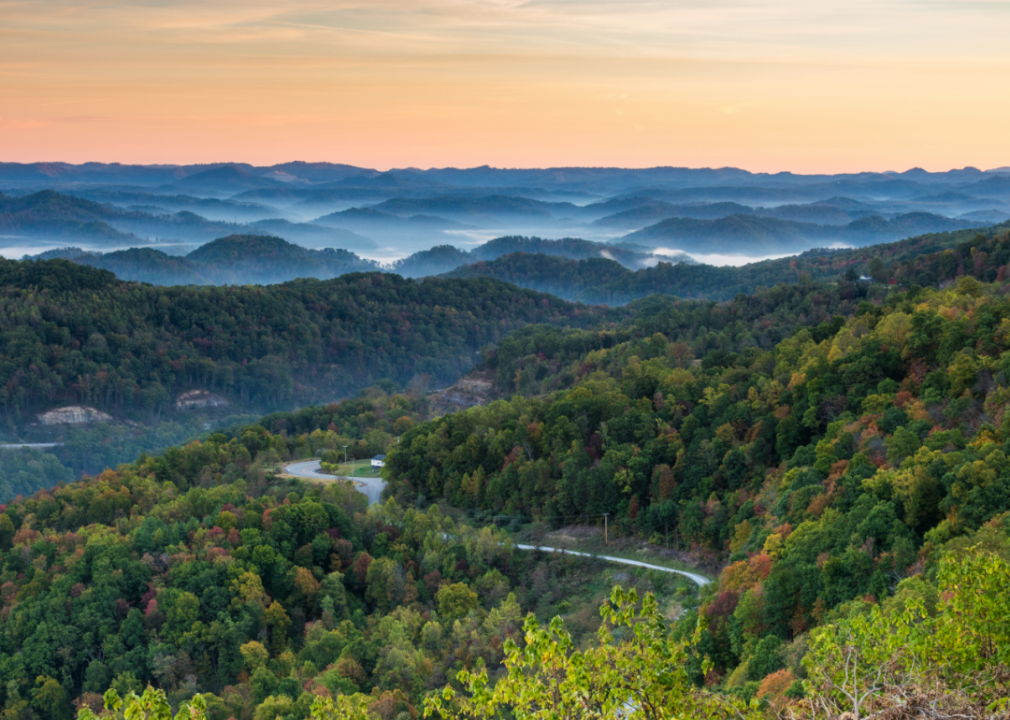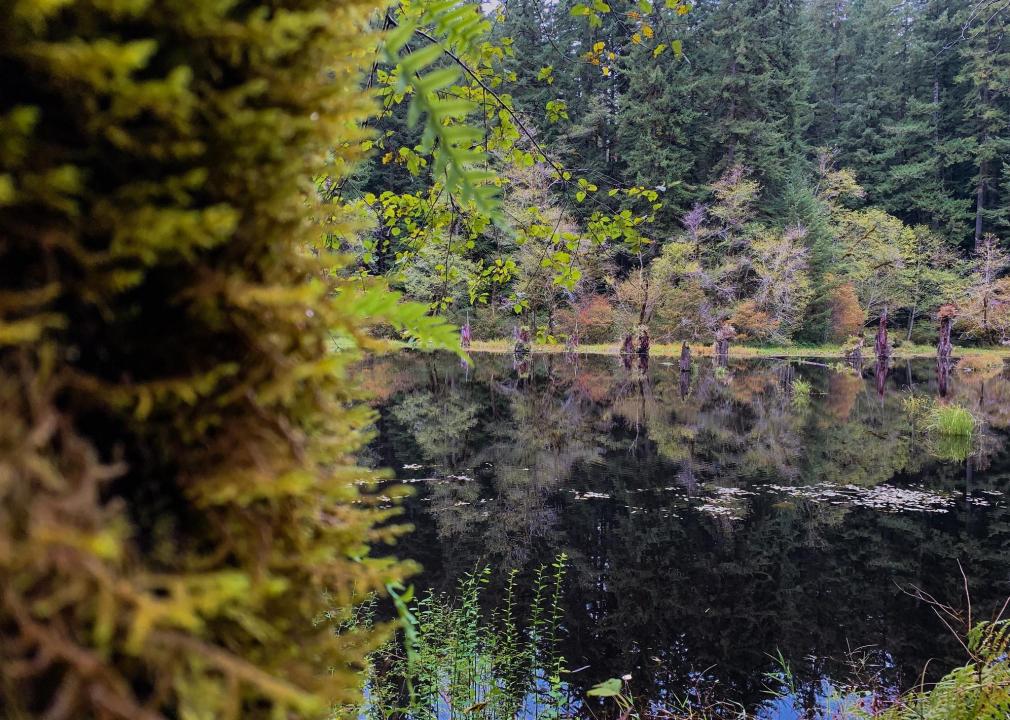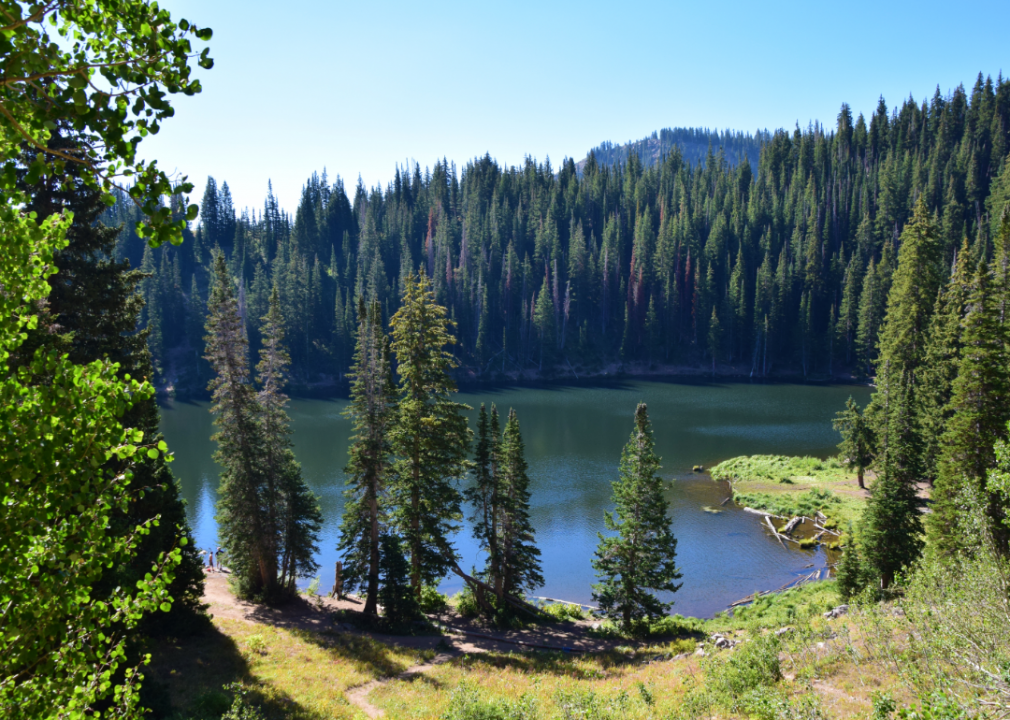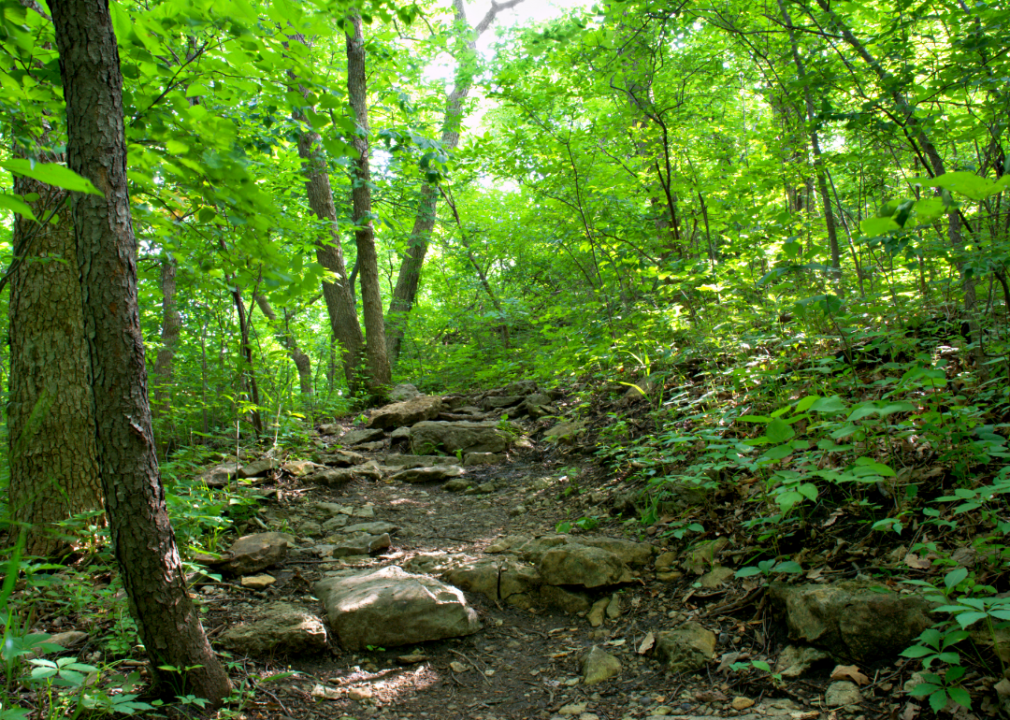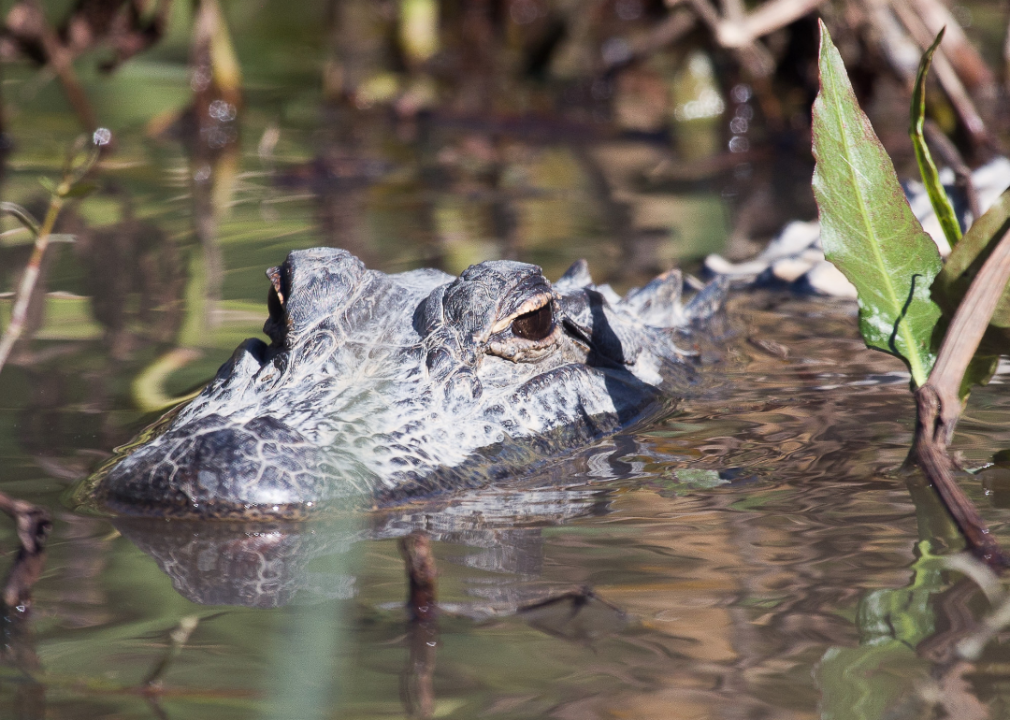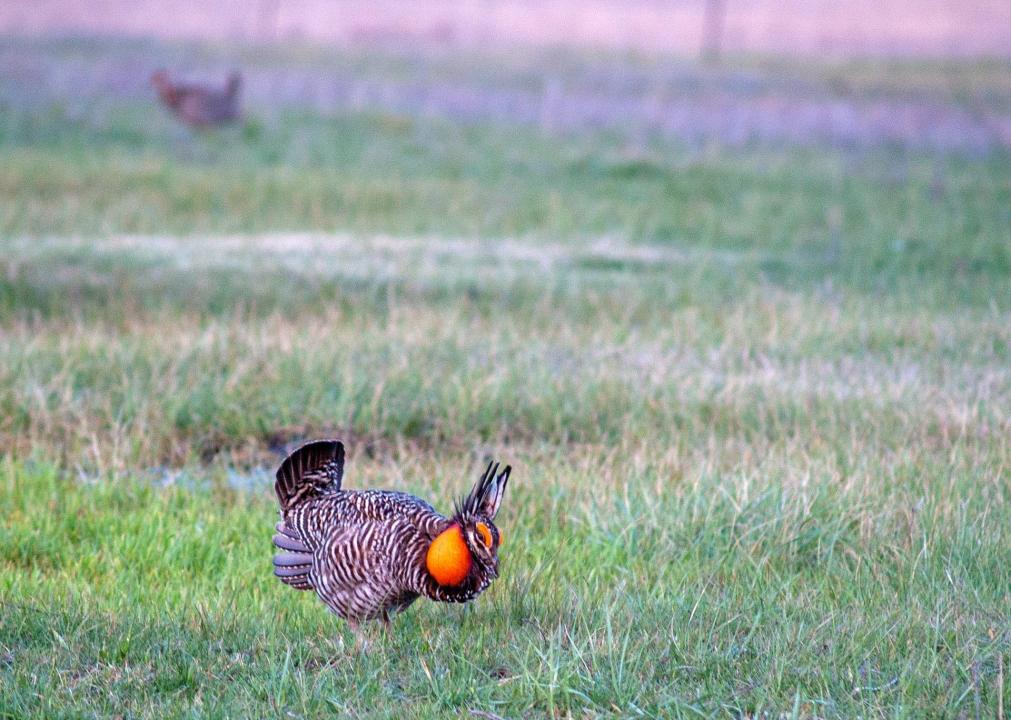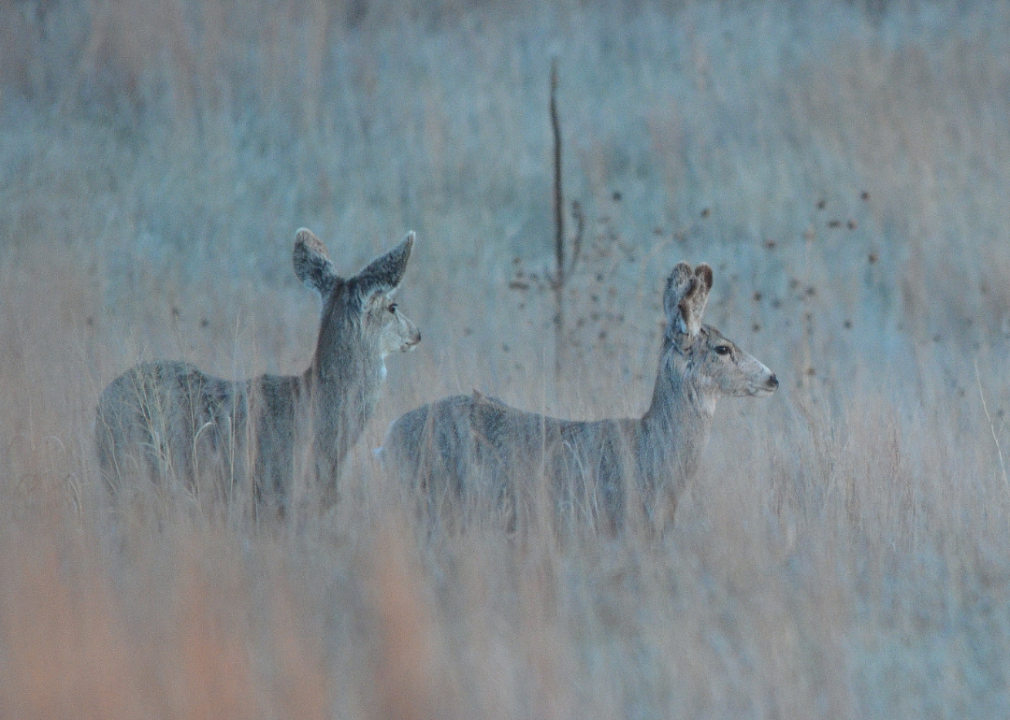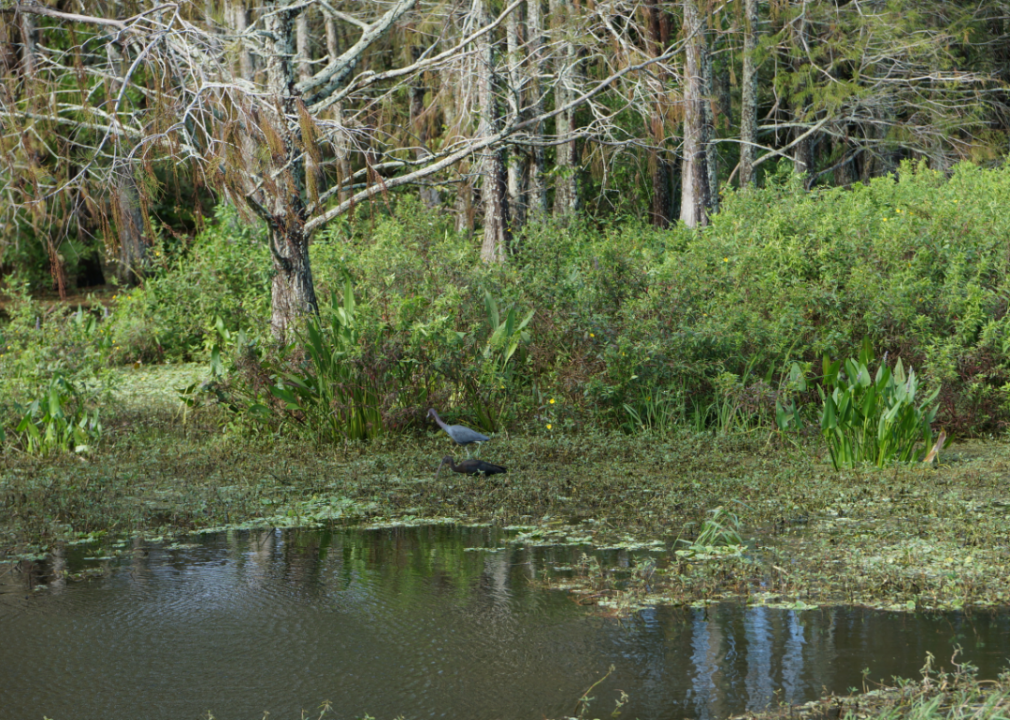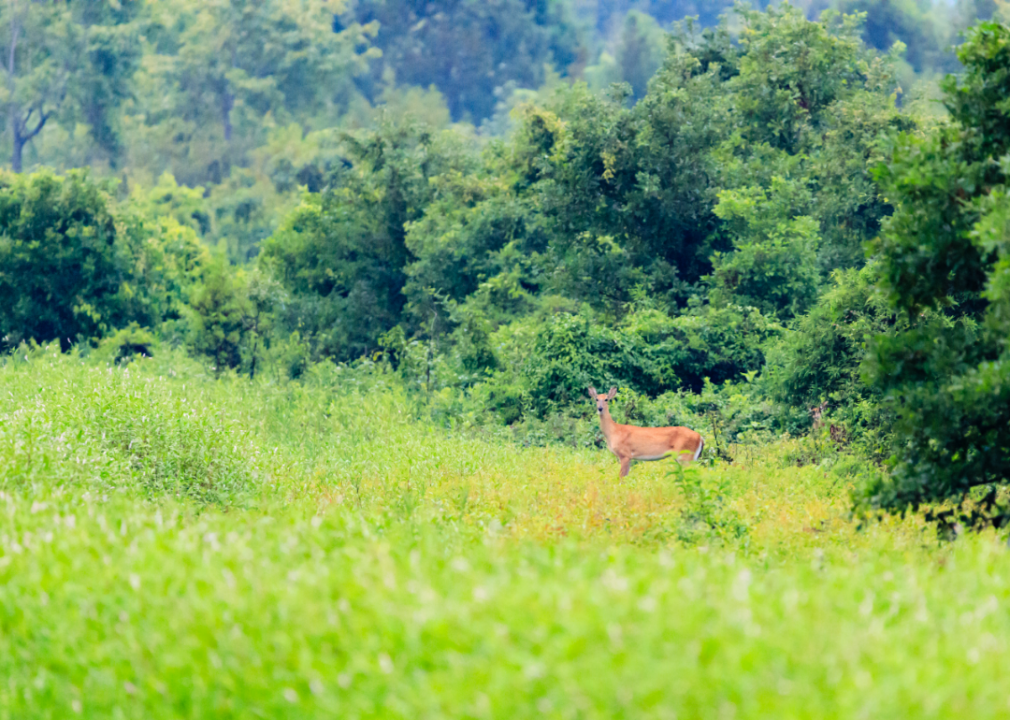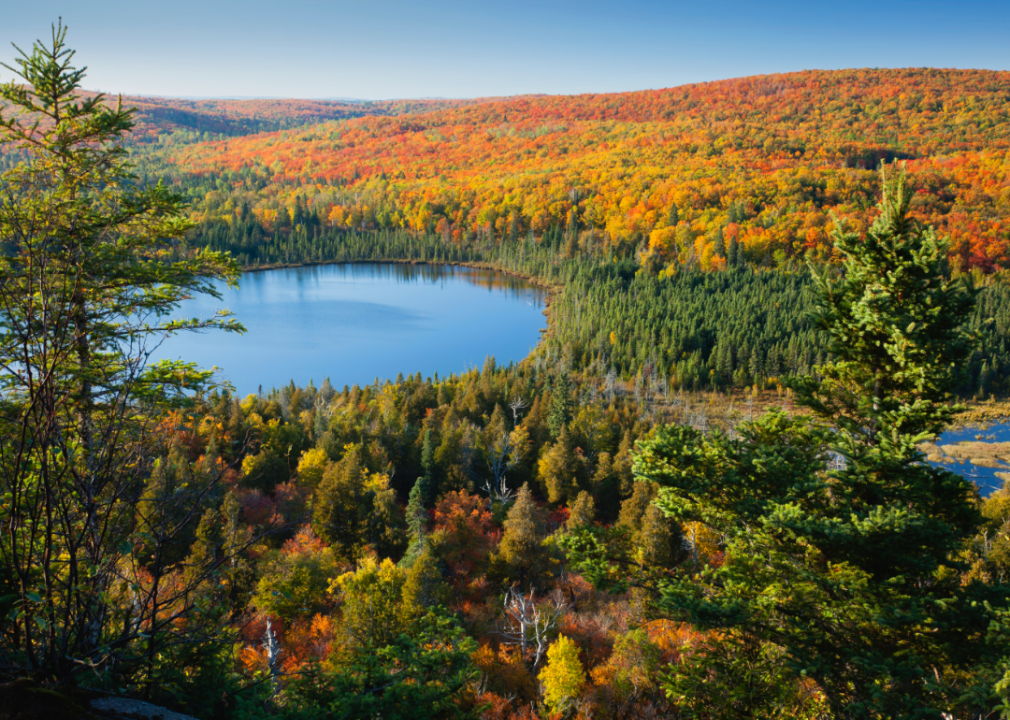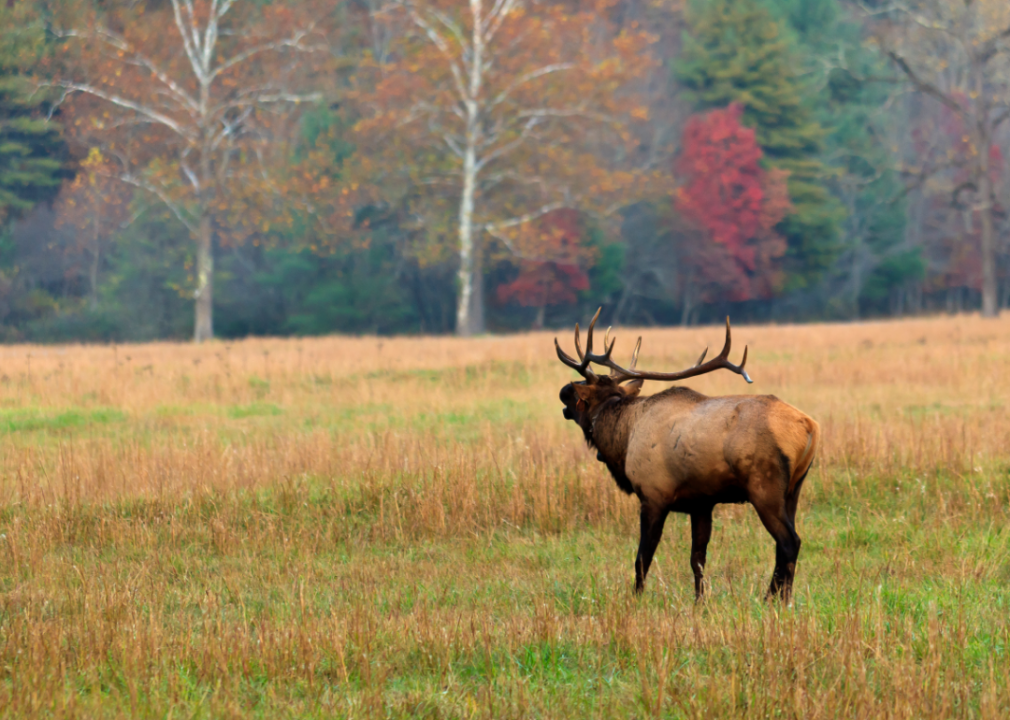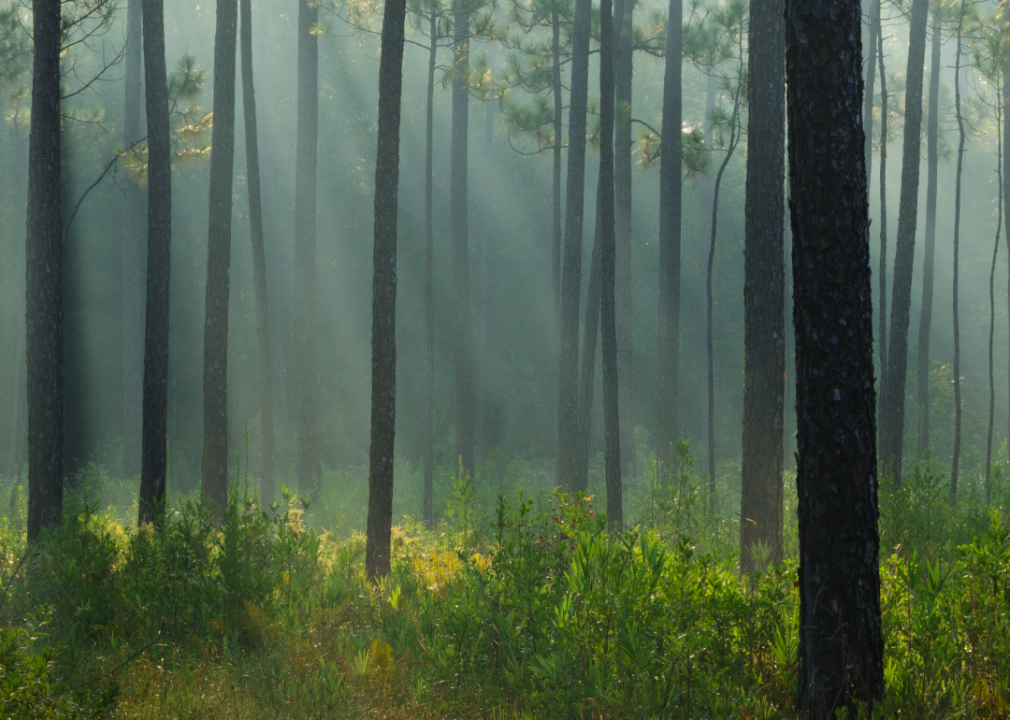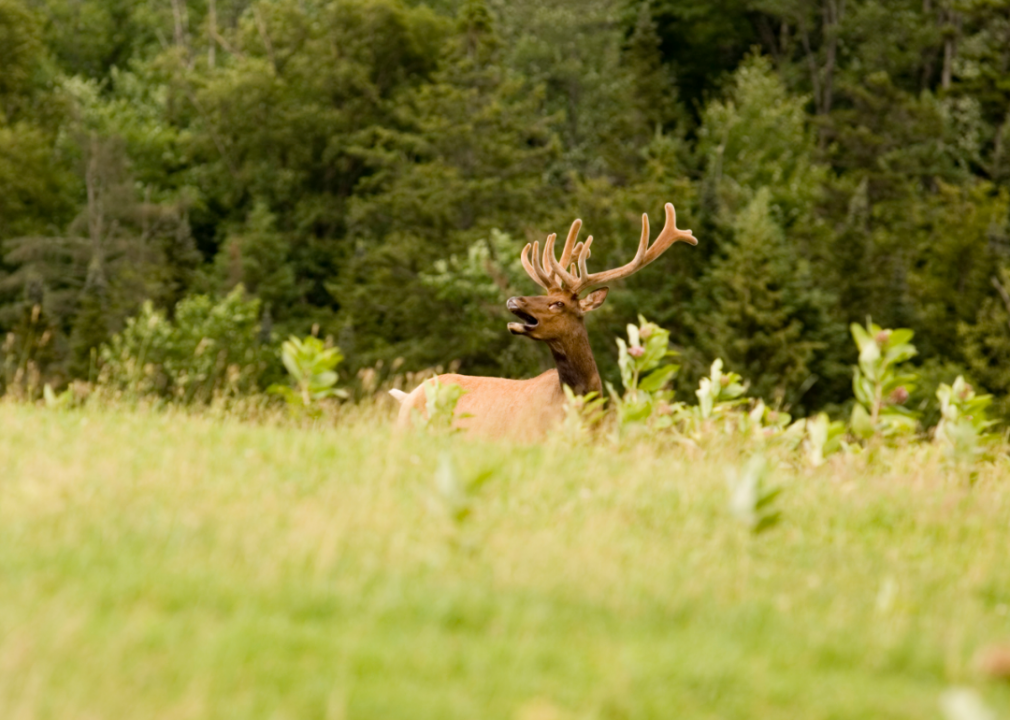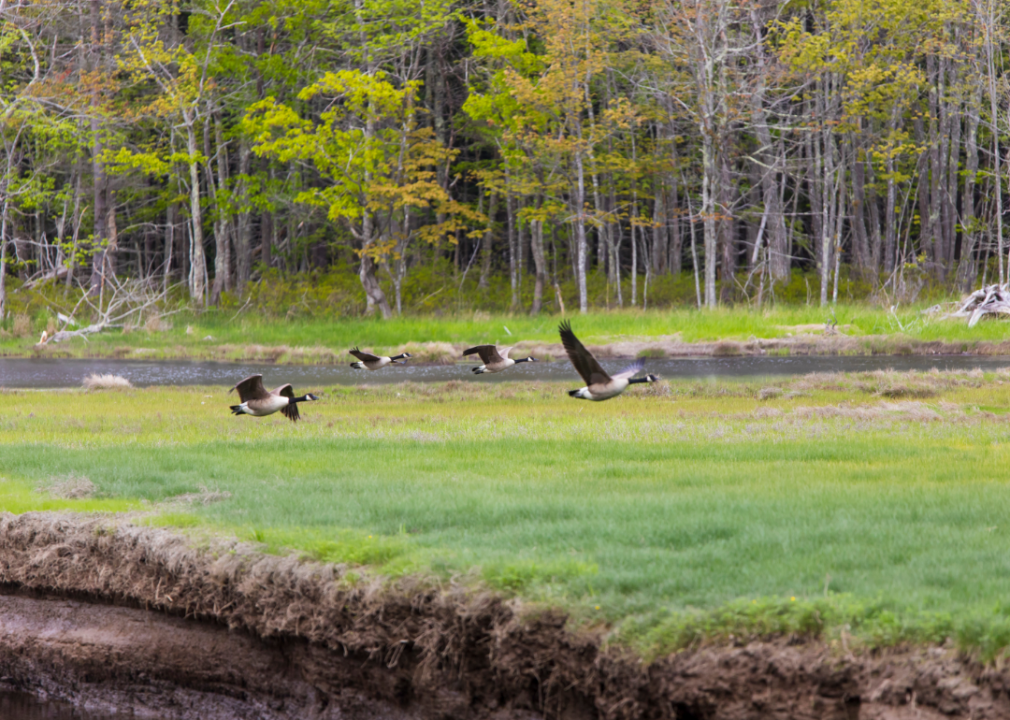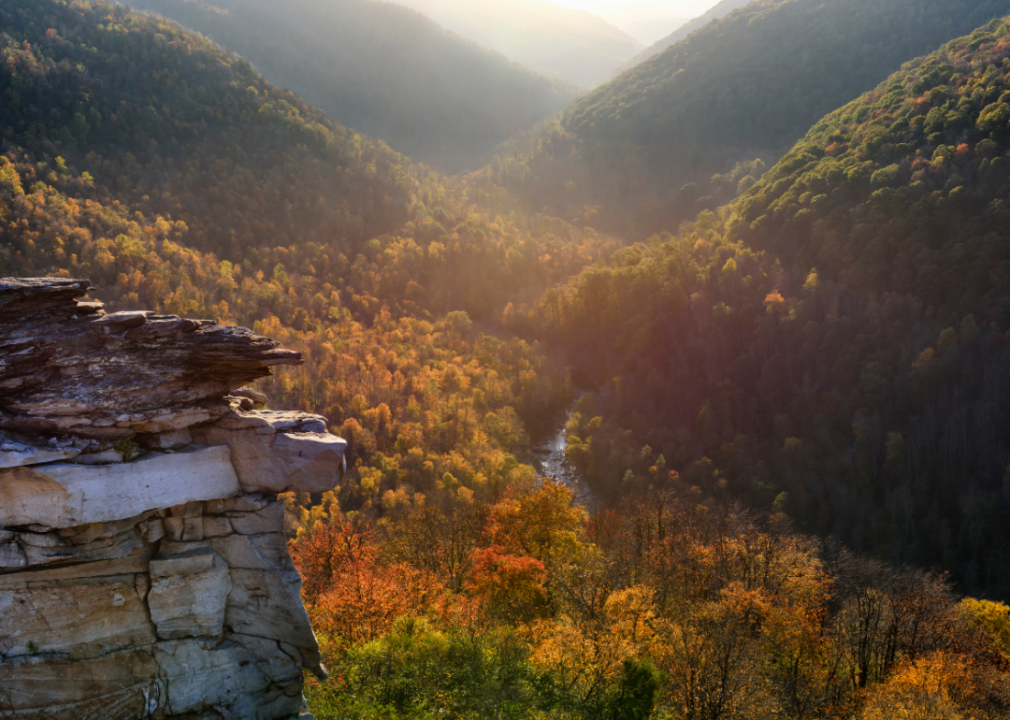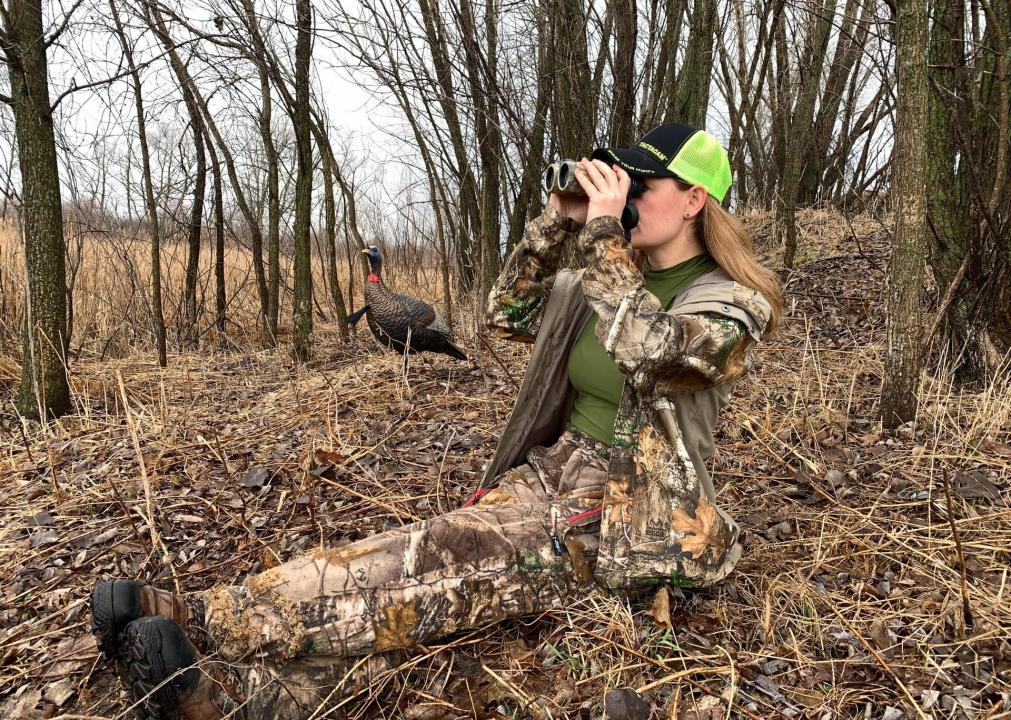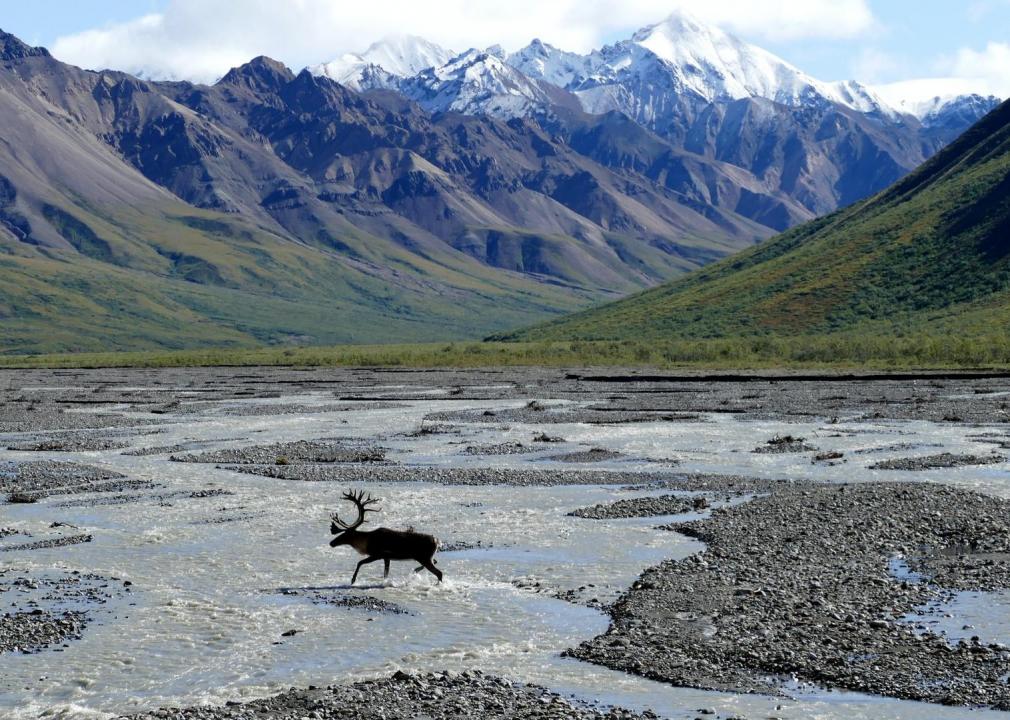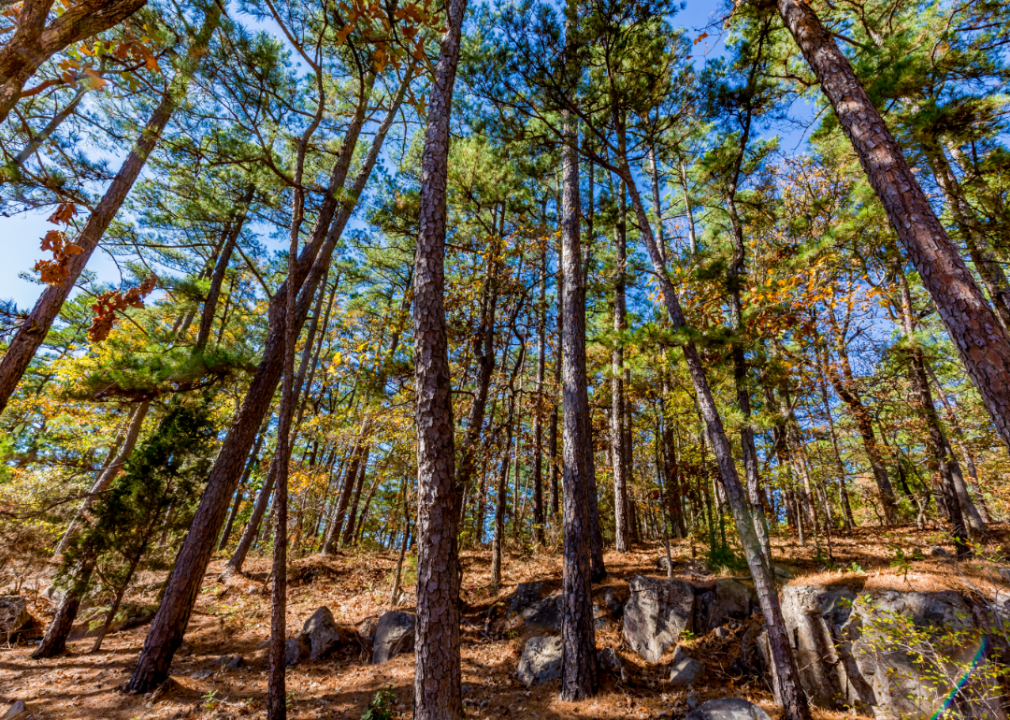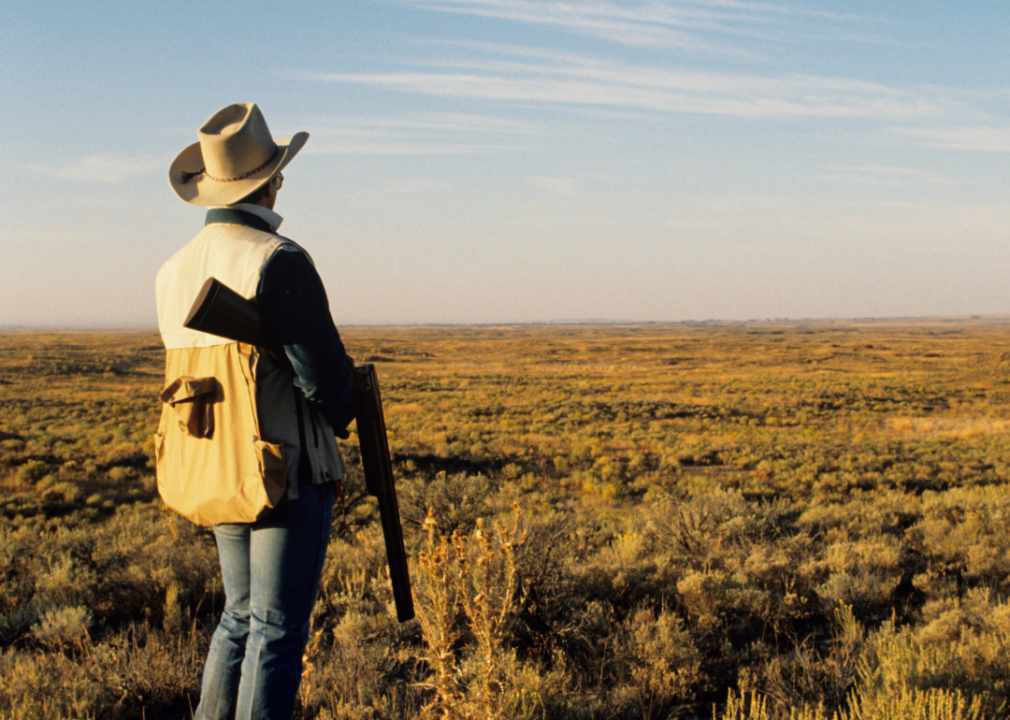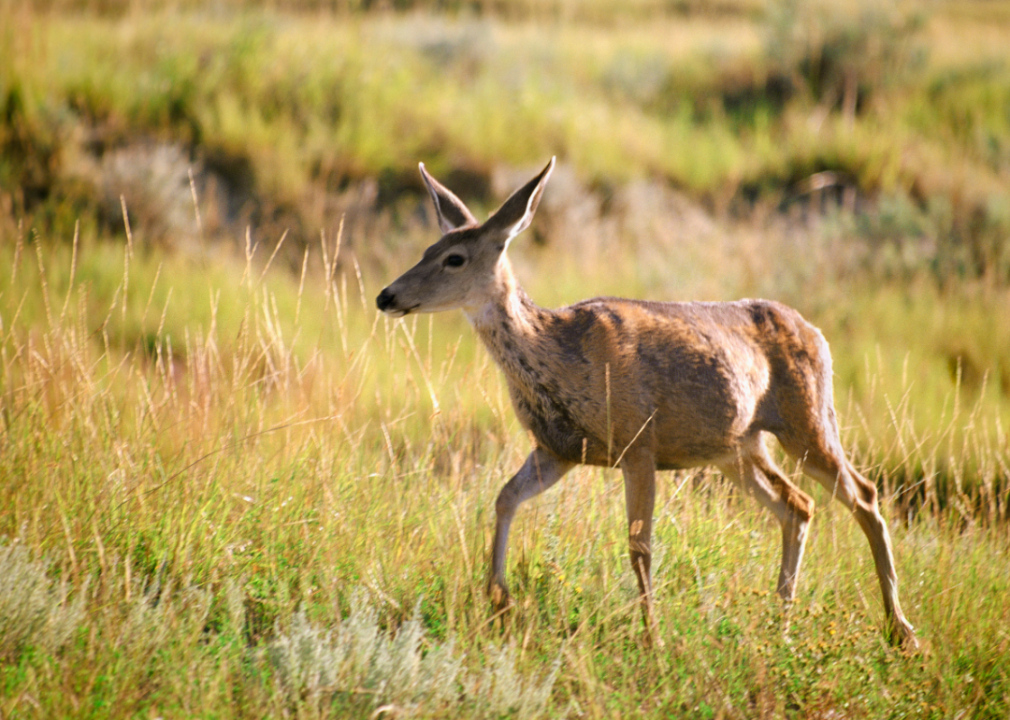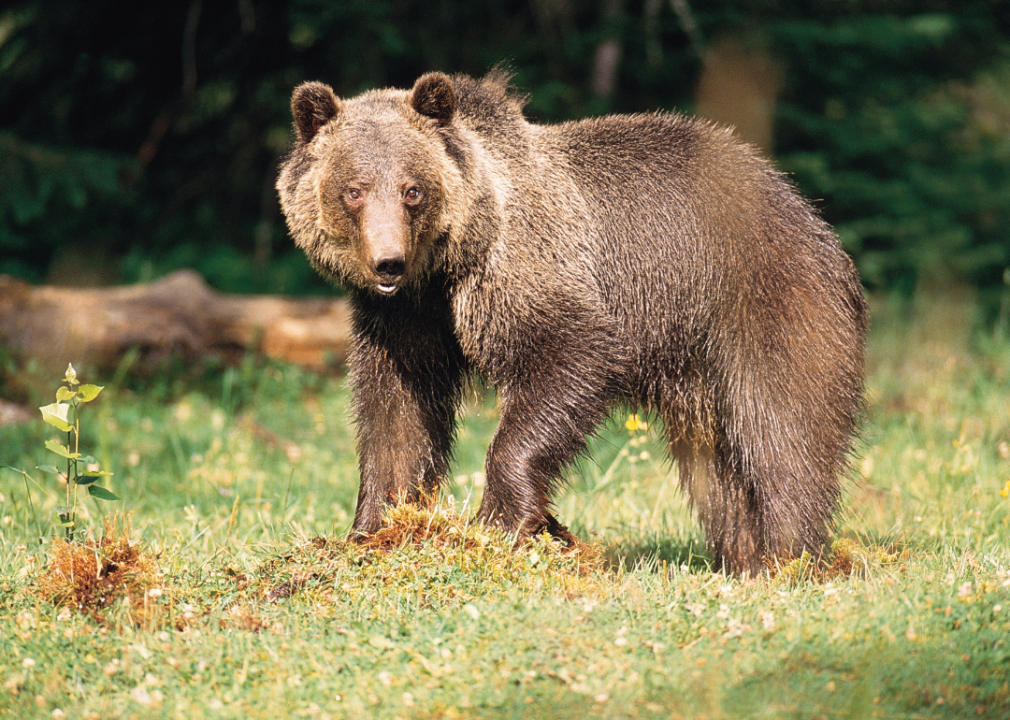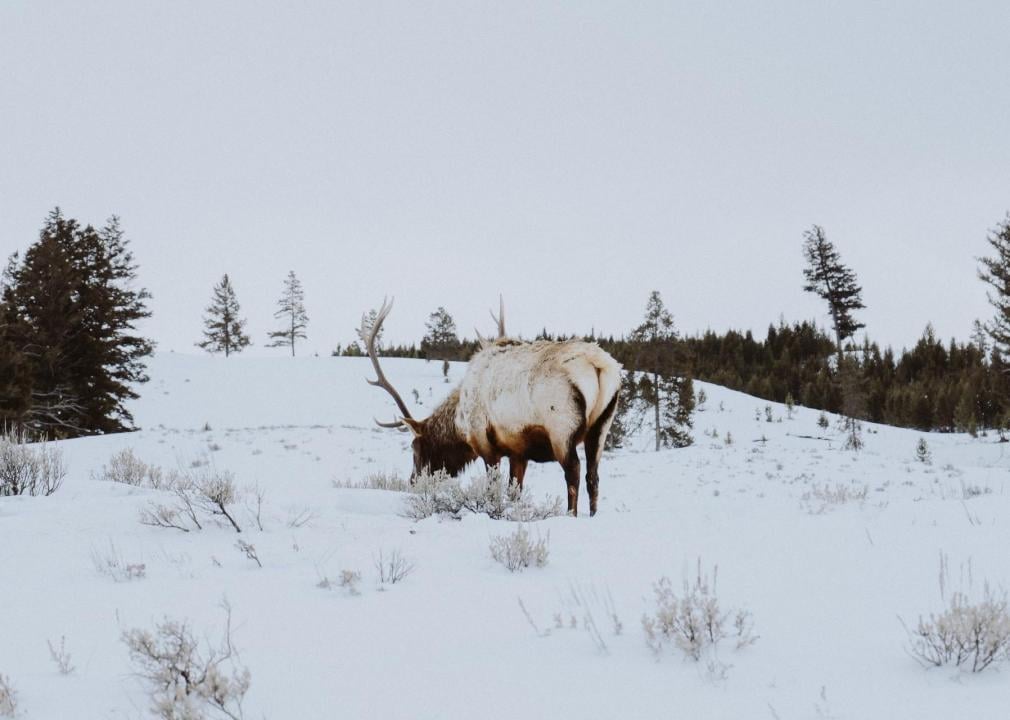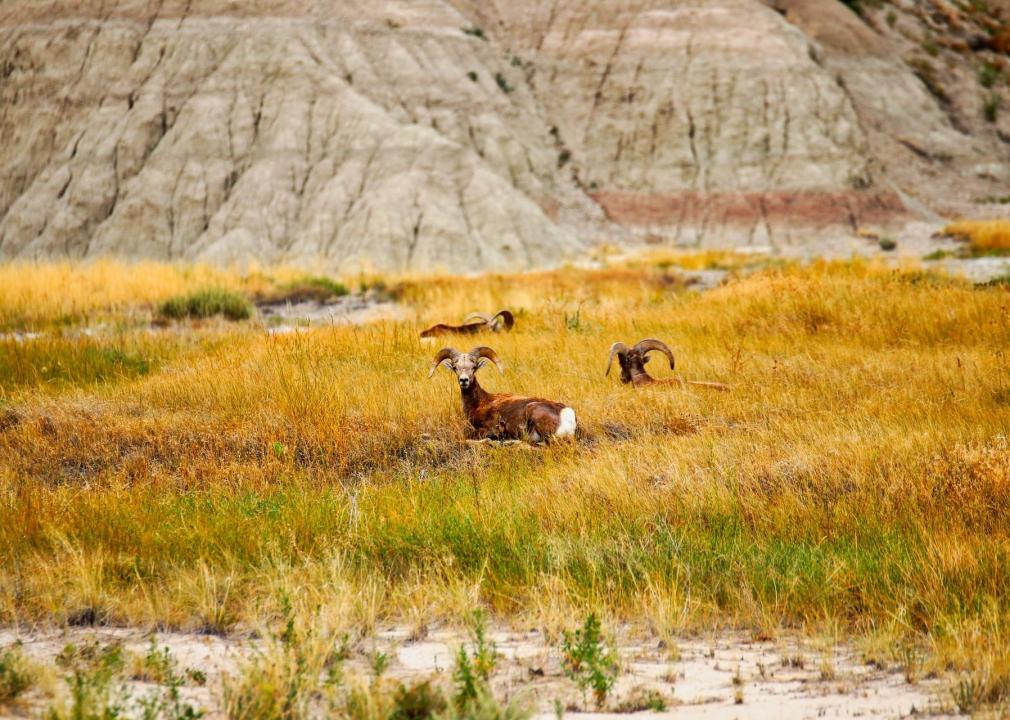States with the most registered hunters
Published 4:00 am Thursday, October 21, 2021
PxHere
States with the most registered hunters
With a 3 million-year record of it, it’s safe to say hunting is one of the oldest forms of human activity. Stacker compiled a list of the states with most registered hunters using 2020 data from the U.S. Fish and Wildlife Service. States are ranked by percent of residents with hunting licenses. Population data is from the Census as of 2018.
There are 15.2 million hunting license holders in the United States. Over the centuries, hunting has largely evolved from necessity to sport—although many hunters in the U.S. do process hunted animals for food. As hunting gained popularity as a leisure activity, ecosystems suffered and led to various regulations in order to help preserve and conserve wildlife resources. In the United States, each state has set dates for hunting seasons, thresholds for how many tags or wild game stamps are allowed, and specific areas that are off-limits to hunting in order to help preserve habitats and animal populations.
In the past several decades, the number of people with hunting licenses in the United States has been on a sharp decline. This can be attributed to a few factors, namely the rise in the urbanization of the United States, the development of farmland, a lack of free time among hunters, and limited access to hunting land, writes the Pennsylvania Game Commission. Licenses dropped from a peak of roughly 17 million in the 1980s to 15 million in 2019, according to The Seattle Times.
The drop-off in revenue from hunting licenses is starting to pose a problem for conservation groups. Thanks to the 1937 Pittman-Robertson Act, an 11% excise tax was placed on the sale of firearms, which was then used for conservation. Not only that, but the profits from hunting licenses themselves also go directly to funding for conservation.
There was a slight uptick in the number of hunters earlier in 2020 as some U.S. meat processors stopped operating because of COVID-19. People also had a lot more time on their hands, according to Reuters. Indiana, for example, saw a 28% jump in turkey license sales during the first week of the season. Whether these results will be sustained remains to be seen.
So which states are holding steady with hunting traditions? Take a look to see where your state ranks on the list.
You may also like: Space discoveries that will blow your mind
![]()
Canva
#50. California
– Percent of residents with paid hunting licenses: 0.7%
– Total paid hunting license holders: 267,170
– Total hunting license, tags, permits and stamps: 991,897
– Gross cost of all hunting licenses: $21,107,452
Over the past 50 years, the number of hunting licenses in California has been on a rapid decline, falling 70% from more than 760,000 in the 1970s to under 268,000 in 2020—even as the state’s population has skyrocketed, according to The Mercury News. Urbanization and strict gun laws, in addition to a drop in overall interest, are why California has the fewest number of hunting licenses in the nation.
Unsplash
#49. Rhode Island
– Percent of residents with paid hunting licenses: 0.7%
– Total paid hunting license holders: 7,208
– Total hunting license, tags, permits and stamps: 26,690
– Gross cost of all hunting licenses: $407,485
In less than 20 years, Rhode Island saw a 40% drop in the number of hunting licenses for residents, according to The Valley Breeze. This can have a Catch-22 effect on the wildlife population in the state. According to the Wildlife Restoration Act, passed in 1937, most of the state conservation efforts are funded through hunting and fishing licenses sales and firearms sales.
Canva
#48. Hawaii
– Percent of residents with paid hunting licenses: 0.7%
– Total paid hunting license holders: 10,614
– Total hunting license, tags, permits and stamps: 11,957
– Gross cost of all hunting licenses: $684,001
Less than 1% of Hawaii’s population has a hunting license. Still, all the major islands have huntable big game. The most popular are axis deer, feral pigs, and mouflon sheep, according to the Archery Trade Association.
Pixabay
#47. New Jersey
– Percent of residents with paid hunting licenses: 0.8%
– Total paid hunting license holders: 71,300
– Total hunting license, tags, permits and stamps: 408,368
– Gross cost of all hunting licenses: $7,629,928
Fewer than 72,000 people in the state of New Jersey have a paid hunting license, which is less than 1% of the entire population. Maybe it’s because New Jersey gun laws are some of the most restrictive in the country—the second toughest in the nation, according to NJ.com. Another reason could be because New Jersey is the most densely populated state in the country, with 1,210 people per square mile. That doesn’t leave a lot of open space opportunities for hunting grounds.
Unsplash
#46. Massachusetts
– Percent of residents with paid hunting licenses: 0.8%
– Total paid hunting license holders: 56,985
– Total hunting license, tags, permits and stamps: 256,651
– Gross cost of all hunting licenses: $2,367,256
Since the end of 2019, Massachusetts has been implementing reforms to its hunting laws. It is now the fifth state in the country to ban hunting contests that target fur-bearing animals, such as coyotes, according to The Associated Press. The state Fisheries and Wildlife Board also voted to ban the intentional abandonment of a wounded or dead animal without making “a reasonable effort to retrieve and use it.”
You may also like: What having a baby was like the year you were born
Canva
#45. Florida
– Percent of residents with paid hunting licenses: 0.9%
– Total paid hunting license holders: 189,706
– Total hunting license, tags, permits and stamps: 303,556
– Gross cost of all hunting licenses: $6,873,110
Hunting may be on the decline across America, but in Florida, hunters are keeping an over 100-year-old hunting tradition alive. Since 1907, St. Vincent Island has been used as a “wildlife emporium,” according to the U.S. Fish and Wildlife Service. For three days every fall, more than 200 hunters descend on the island to hunt the population of sambar deer that inhabit the island.
Canva
#44. Connecticut
– Percent of residents with paid hunting licenses: 1.0%
– Total paid hunting license holders: 34,340
– Total hunting license, tags, permits and stamps: 110,205
– Gross cost of all hunting licenses: $2,325,211
Like other states with declining hunter populations, Connecticut’s conservation efforts are suffering. Connecticut Post reports that over the past 20 to 30 years, the number of licensed hunters in Connecticut has dropped from more than 5% of the population to less than 1%.
Unsplash
#43. Delaware
– Percent of residents with paid hunting licenses: 1.7%
– Total paid hunting license holders: 16,291
– Total hunting license, tags, permits and stamps: 53,683
– Gross cost of all hunting licenses: $1,447,208
Delaware also has a small percentage of licensed hunters. Less than 2% of the population has a hunting license. But about 10% of land in Delaware is state-owned, meaning it is open for public hunting.
Unsplash
#42. Maryland
– Percent of residents with paid hunting licenses: 2.0%
– Total paid hunting license holders: 119,202
– Total hunting license, tags, permits and stamps: 345,327
– Gross cost of all hunting licenses: $6,437,254
The gross cost of all hunting licenses in Maryland is upwards of $6 million. But that’s merely the tip of the iceberg in terms of how much money hunting generates in the state. According to Hunting Works for Maryland, in 2018, hunting generated $401 million in economic activity in the state, the majority of which was spent at locally owned businesses across the state.
Canva
#41. Nevada
– Percent of residents with paid hunting licenses: 2.3%
– Total paid hunting license holders: 69,681
– Total hunting license, tags, permits and stamps: 143,282
– Gross cost of all hunting licenses: $7,629,934
The hunting population in Nevada isn’t super robust (with just 2.3% of the population owning licenses), but it is one of the more controversial. According to The Sierra Nevada Ally, Nevada is one of 32 states to allow an individual to legally hunt a bear. It is one of only 14 states to allow specially trained dogs to assist in bear hunting, which is one of the most hotly contested laws in the state.
You may also like: 100 iconic photos that capture 100 years of world history
Pixabay
#40. Washington
– Percent of residents with paid hunting licenses: 2.3%
– Total paid hunting license holders: 174,660
– Total hunting license, tags, permits and stamps: 685,780
– Gross cost of all hunting licenses: $17,068,229
Washington state is one of six states that does not have an age minimum requirement for hunting. The others are Alabama, Illinois, Indiana, New Mexico, and Vermont. After that, the next youngest age is 6 years old, in the state of Arkansas.
Canva
#39. Illinois
– Percent of residents with paid hunting licenses: 2.3%
– Total paid hunting license holders: 297,243
– Total hunting license, tags, permits and stamps: 1,437,735
– Gross cost of all hunting licenses: $31,024,125
The past five decades have been disappointing for Illinois’ hunting industry as the number of licensed hunters continues to decline. This is a direct result of declining natural habitats as farms and cities have continued to expand since the 1970s.
Canva
#38. New York
– Percent of residents with paid hunting licenses: 2.8%
– Total paid hunting license holders: 556,897
– Total hunting license, tags, permits and stamps: 1,389,949
– Gross cost of all hunting licenses: $24,248,161
Less than 3% of the New York State population has a hunting license. However, among that population, women are the fastest-growing demographic. According to New York Hunting & Trapping, women are drawn to the sport to spend more time with family, to put organic and locally sourced food on the table, and to spend more time outside. In 2018, 53,000 women in the state had hunting licenses.
You may also like: The 52 women who have won the Nobel prize
Canva
#37. Virginia
– Percent of residents with paid hunting licenses: 3.1%
– Total paid hunting license holders: 261,416
– Total hunting license, tags, permits and stamps: 825,084
– Gross cost of all hunting licenses: $21,279,813
Back in November, a misleading claim was circulating on Facebook, stating that the Virginia governor had outlawed minors from hunting. This was proven to be false, according to The Associated Press. The social media posts started after Democrats won control of the legislature, which prompted the discussion of gun reform. Youth hunting, which applies to kids under the age of 15, was not affected.
Unsplash
#36. Ohio
– Percent of residents with paid hunting licenses: 3.1%
– Total paid hunting license holders: 361,119
– Total hunting license, tags, permits and stamps: 918,275
– Gross cost of all hunting licenses: $21,634,294
Ohio hunters typically have something to smile about every deer season, as the state is one of the best places in the country to hunt deer. According to Mike Moore in Outdoor News, the 2019–2020 hunting season checked over 180,000 deer. The season runs from the end of September to the beginning of February.
Canva
#35. South Carolina
– Percent of residents with paid hunting licenses: 3.6%
– Total paid hunting license holders: 181,820
– Total hunting license, tags, permits and stamps: 1,098,355
– Gross cost of all hunting licenses: $10,816,831
While the percentage of the South Carolina population with hunting licenses is low, numbers have been on the rise since March as COVID-19 has pushed people to look for alternative outdoor activities. According to U.S. News & World Reports, resident fishing and hunting licenses in March 2020 were up to 7,050, compared to 5,643 from the previous year.
Canva
#34. Indiana
– Percent of residents with paid hunting licenses: 3.8%
– Total paid hunting license holders: 253,611
– Total hunting license, tags, permits and stamps: 372,629
– Gross cost of all hunting licenses: $11,308,327
Indiana is still struggling with a declining number of licensed hunters in the states, which directly affects the wildlife preservation programs. To combat this, Chicago Tribune reports that officials are trying to recruit more Hoosier women and young people to hunt game.
Canva
#33. Texas
– Percent of residents with paid hunting licenses: 3.9%
– Total paid hunting license holders: 1,120,620
– Total hunting license, tags, permits and stamps: 1,740,102
– Gross cost of all hunting licenses: $46,886,984
Things will look a little different to the more than 1 million licensed hunters in Texas for the 2020–21 season. The Texas Outdoor Annual Hunting, Fishing and Boating Regulations will be going all digital for the upcoming season. The annual booklets are usually printed, but due to the economic impact of the coronavirus, going online was the more financially sound option, writes Bluebonnet News.
Canva
#32. New Hampshire
– Percent of residents with paid hunting licenses: 4.1%
– Total paid hunting license holders: 56,001
– Total hunting license, tags, permits and stamps: 149,562
– Gross cost of all hunting licenses: $4,487,238
There are 56,001 paid hunting license holders in the state of New Hampshire, with the exception of those who belong to one very well-to-do club. The Blue Mountain Forest Association is a private hunting reserve with a membership fee upwards of $10,000, which invites its members to hunt on its grounds—no license required.
Sumikophoto // Shutterstock
#31. Arizona
– Percent of residents with paid hunting licenses: 4.2%
– Total paid hunting license holders: 304,789
– Total hunting license, tags, permits and stamps: 506,081
– Gross cost of all hunting licenses: $17,485,504
Arizona is one of the top states in the nation for big game hunting. There are 10 big game species in the state, including pronghorn, black bear, mountain lion, desert bighorn sheep, elk, and more.
You may also like: 50 endangered species that only live in the Amazon Rainforest
Unsplash
#30. Colorado
– Percent of residents with paid hunting licenses: 5.2%
– Total paid hunting license holders: 295,451
– Total hunting license, tags, permits and stamps: 582,956
– Gross cost of all hunting licenses: $59,006,693
Thanks to the Colorado Parks & Wildlife Commission, hunters that are part of the Public Access Program gained more than 200,000 new acres of hunting grounds ahead of the 2020 season. The Public Access Program had 567,000 acres prior to this. According to the Craig Daily Press, the Public Access Program provides seasonal hunting and fishing opportunities on Colorado trust land.
Chris Short // Wikimedia Commons
#29. New Mexico
– Percent of residents with paid hunting licenses: 5.3%
– Total paid hunting license holders: 110,194
– Total hunting license, tags, permits and stamps: 386,978
– Gross cost of all hunting licenses: $16,064,100
You don’t have to commit to a safari in Africa to track down big African game. The gemsbok, a species indigenous to Africa, was introduced to New Mexico by the Department of Game and Fish in the 1960s. Today there are around 2,000 gemsboks in New Mexico, according to Outdoor Hub.
Canva
#28. North Carolina
– Percent of residents with paid hunting licenses: 5.8%
– Total paid hunting license holders: 603,995
– Total hunting license, tags, permits and stamps: 322,044
– Gross cost of all hunting licenses: $10,669,918
North Carolina’s licensed hunters are looking at a new set of hunting rules and regulations. According to The Asheville Citizen-Times, the North Carolina Wildlife Resources Commission adopted 44 proposed rules in early 2020. One of the new rules is that big game harvest must be registered by noon the following day after leaving the hunting area.
Canva
#27. Georgia
– Percent of residents with paid hunting licenses: 5.9%
– Total paid hunting license holders: 625,142
– Total hunting license, tags, permits and stamps: 1,381,224
– Gross cost of all hunting licenses: $19,171,012
While the majority of the rest of the country sees its hunting numbers decline, Georgia is one of the exceptions. According to Mark Davis in The Atlanta Journal-Constitution, the number of licensed hunters is on the rise. In 2015 the state had nearly 400,000 licensed hunters. In 2020, there were 625,142.
Canva
#26. Michigan
– Percent of residents with paid hunting licenses: 6.7%
– Total paid hunting license holders: 665,431
– Total hunting license, tags, permits and stamps: 2,130,146
– Gross cost of all hunting licenses: $35,676,998
Hunting is a cash cow for the state of Michigan, bringing around $2.8 billion into the state economy. But much like the rest of the country, the industry is on the decline, likely due to a younger generation who is less eager to take up hunting.
You may also like: American history from the year you were born
Unsplash
#25. Iowa
– Percent of residents with paid hunting licenses: 6.9%
– Total paid hunting license holders: 218,483
– Total hunting license, tags, permits and stamps: 659,074
– Gross cost of all hunting licenses: $20,076,441
Hunting is on the decline across the nation, and many hunters in Iowa are saying that that could be detrimental in terms of controlling the deer population. The Iowa Department of Natural Resources estimates that the state has a deer herd of 500,000, writes The Associated Press, which could double within three years if hunting continues to lose popularity in the state.
Canva
#24. Pennsylvania
– Percent of residents with paid hunting licenses: 7.3%
– Total paid hunting license holders: 930,815
– Total hunting license, tags, permits and stamps: 2,646,720
– Gross cost of all hunting licenses: $36,873,199
The 2019–2020 season was a booming one for Pennsylvania’s hunters. According to Marcus Schneck of The Patriot-News, that deer season saw more deer harvest than the prior 15 years.
Canva
#23. Kentucky
– Percent of residents with paid hunting licenses: 7.5%
– Total paid hunting license holders: 334,342
– Total hunting license, tags, permits and stamps: 581,233
– Gross cost of all hunting licenses: $19,369,805
The 2019–2020 modern gun season was also particularly good for Kentucky’s hunting population. The 16-day season harvested 107,039 deer, topping the previous record, which was set in the 2018–2019 season, writes WLKY.com.
Bureau of Land Management Oregon and Washington // Flickr
#22. Oregon
– Percent of residents with paid hunting licenses: 7.8%
– Total paid hunting license holders: 326,663
– Total hunting license, tags, permits and stamps: 1,289,774
– Gross cost of all hunting licenses: $28,221,918
As Oregon becomes an increasingly more popular place to live, its wildlife areas are starting to feel the effects of overcrowding. To combat this, Oregon’s public lands increased its costs for visitors, writes Salem Statesman Journal. This includes hunting and fishing licenses, as well as tags. It’s part of a six-year strategy to slowly increase the cost of licenses, due to a $32 million shortcoming in the Oregon Department of Fish and Wildlife in 2014.
Canva
#21. Utah
– Percent of residents with paid hunting licenses: 7.9%
– Total paid hunting license holders: 249,765
– Total hunting license, tags, permits and stamps: 453,609
– Gross cost of all hunting licenses: $18,074,717
While the rest of the nation is slowly losing interest in hunting, Utah is proving to be one of the exceptions. According to Carter Williams on KSL.com, Utah’s hunting licenses have remained fairly consistent over the past 10 years, with numbers spiking in 2019 with 50,636 new licenses sold.
You may also like: Bizarre slang words and phrases from every state
Canva
#20. Missouri
– Percent of residents with paid hunting licenses: 7.9%
– Total paid hunting license holders: 486,025
– Total hunting license, tags, permits and stamps: 1,946,253
– Gross cost of all hunting licenses: $21,801,827
In a controversial move, the Missouri Department of Conservation announced in May 2020 a framework for a black bear hunting season, reports Fox News. The black bear population has been increasing annually by about 9%, and the hunting season would be implemented to keep that number in check.
Canva
#19. Louisiana
– Percent of residents with paid hunting licenses: 8.5%
– Total paid hunting license holders: 396,621
– Total hunting license, tags, permits and stamps: 607,338
– Gross cost of all hunting licenses: $10,156,375
The number of women who are purchasing hunting licenses is going up across the nation. According to a U.S. Fish and Wildlife Service study, it’s the fastest-growing demographic in hunting. In Louisiana, however, the number of women who are purchasing hunting licensees is going down. According to Baton Rouge Business Report, the number of licenses issued to women has dropped over the past few years.
Unsplash
#18. Kansas
– Percent of residents with paid hunting licenses: 8.5%
– Total paid hunting license holders: 248,430
– Total hunting license, tags, permits and stamps: 468,485
– Gross cost of all hunting licenses: $25,944,894
Echoing the shifting hunting trends across the nation, Kansas is also reporting a decrease in the number of licenses and tags sold. According to Alec Gartner of KSNT.com, deer tag purchases in Kansas have gone down by more than 26,000 since 2015. The Kansas Department of Wildlife, Parks and Tourism depends on these dollars for funding, so to make up the difference, they have allowed people from out of state to also buy tags.
Canva
#17. Nebraska
– Percent of residents with paid hunting licenses: 9.5%
– Total paid hunting license holders: 183,516
– Total hunting license, tags, permits and stamps: 407,816
– Gross cost of all hunting licenses: $15,851,695
To combat a rising deer population that is destroying crops, a new bill was passed in 2020 allowing for an earlier deer hunting season. The bill provides four permits per landowner, as well.
Canva
#16. Mississippi
– Percent of residents with paid hunting licenses: 9.7%
– Total paid hunting license holders: 288,287
– Total hunting license, tags, permits and stamps: 393,950
– Gross cost of all hunting licenses: $12,791,274
In fall of 2020, the Mississippi Department of Wildlife, Fisheries, and Parks took its full hunting certification and education program online. It allows for residents ages 16 and older to complete the education requirements via the web. Anyone who is under 16 still has to participate in classroom education to be certified.
You may also like: Can you answer these real ‘Jeopardy!’ questions about cats?
Canva
#15. Arkansas
– Percent of residents with paid hunting licenses: 9.7%
– Total paid hunting license holders: 293,356
– Total hunting license, tags, permits and stamps: 507,918
– Gross cost of all hunting licenses: $18,830,352
Funding for natural resource protection is on the decline in Arkansas due to the decreasing number of fishing and hunting licenses, Leslie Newell Peacock writes in the Arkansas Times. Arkansas’ hunting participation has been on the decline for decades. In 1996 the state passed Amendment 75, which imposed a conservation tax of one-eighth of a cent to make up the difference.
Canva
#14. Minnesota
– Percent of residents with paid hunting licenses: 9.8%
– Total paid hunting license holders: 550,087
– Total hunting license, tags, permits and stamps: 1,364,972
– Gross cost of all hunting licenses: $30,336,640
Minnesota’s Department of Natural Resources has upped the number of elk hunting licenses in 2020 to 44 from 27 in 2019. According to the Detroit Lakes Tribune, other changes include more elk seasons and license options, which will be used to help manage the rising elk populations in the state.
Canva
#13. Tennessee
– Percent of residents with paid hunting licenses: 10.1%
– Total paid hunting license holders: 684,364
– Total hunting license, tags, permits and stamps: 712,303
– Gross cost of all hunting licenses: $20,908,618
In June 2020, Tennessee passed a law lifting restrictions on family members who want to hunt or fish on family property. Under the new law, family members will not need a hunting or fishing license when participating on farmlands owned by a spouse, parent, or grandparent. Adrian Mojica writes in Fox Nashville that the permission trickles down to grandchildren, great-grandchildren, spouses of children, and spouses.
Canva
#12. Alabama
– Percent of residents with paid hunting licenses: 10.3%
– Total paid hunting license holders: 503,144
– Total hunting license, tags, permits and stamps: 530,675
– Gross cost of all hunting licenses: $11,793,800
Alabama hunting is yet another victim of the rise of urbanization. A beloved tradition among older generations, it is one that is not picked up as quickly by the younger ones. According to Corky Pugh of the Yellow Hammer News, the decline is also driven by changing social trends. Kids prefer virtual games to grandpa’s hunting rifle. Another factor is the rising cost of hunting in the state overall.
Canva
#11. Vermont
– Percent of residents with paid hunting licenses: 10.3%
– Total paid hunting license holders: 64,788
– Total hunting license, tags, permits and stamps: 178,323
– Gross cost of all hunting licenses: $4,016,039
Hunting license sales dropped in every Vermont county between 2016 and 2018. The reason? Rising urbanization, changing attitudes, aging population, and declining rural populations. The decrease in sales started happening back in 1987 and has continued ever since.
You may also like: U.S. Air Force by the numbers
Canva
#10. Maine
– Percent of residents with paid hunting licenses: 11.5%
– Total paid hunting license holders: 154,580
– Total hunting license, tags, permits and stamps: 232,289
– Gross cost of all hunting licenses: $7,587,437
To combat the decline in hunters, the Maine Department of Inland Fisheries and Wildlife has set out to recruit new hunters through a pilot project that pairs novices with experienced mentors. According to The Portland Press Herald, other states have tried similar programs, and Maine has offered the option for veterans in the past. This is the first time it has been open to the public.
Canva
#9. West Virginia
– Percent of residents with paid hunting licenses: 11.6%
– Total paid hunting license holders: 210,101
– Total hunting license, tags, permits and stamps: 646,508
– Gross cost of all hunting licenses: $8,831,815
Although nearly 12% of West Virginians take part in hunting, the state’s Division of Natural Resources feels it’s still not enough. According to Chris Lawrence in Metro News, while the number is high compared to the rest of the states, it still threatens the future of the wildlife model in the state. A team has been organized to help with recruiting and retention of new hunters and other outdoor pursuits.
Unsplash
#8. Wisconsin
– Percent of residents with paid hunting licenses: 11.7%
– Total paid hunting license holders: 680,733
– Total hunting license, tags, permits and stamps: 4,142,884
– Gross cost of all hunting licenses: $40,940,312
In the wake of COVID-19, Wisconsin Gov. Tony Evers made the decision to close hunter safety courses in Oneida County. The Wisconsin-based group, Hunter Nation, was outraged by the decision, reports WisBusiness.com, saying that the decision deprives thousands of people of carrying on the hunting tradition.
Unsplash
#7. Alaska
– Percent of residents with paid hunting licenses: 12.3%
– Total paid hunting license holders: 90,406
– Total hunting license, tags, permits and stamps: 447,761
– Gross cost of all hunting licenses: $11,114,179
In June 2020, the Trump administration overturned an Obama-era ban on certain hunting and trapping styles on Alaskan national preserves. The rule, which went into effect in July 2020, allows hunters to use certain techniques for hunting and trapping, like artificial light to hunt black bears (cubs included) in their dens. The National Park Service says tribal leaders, as well as hunting groups, support the new rule. Critics say the techniques are cruel, CNN reporter David Williams writes.
Canva
#6. Oklahoma
– Percent of residents with paid hunting licenses: 14.2%
– Total paid hunting license holders: 558,374
– Total hunting license, tags, permits and stamps: 433,716
– Gross cost of all hunting licenses: $9,917,076
Oklahoma is one of the states in the nation that allows for the hunting of black bears. In 2019, the state increased the number of counties that permit the practice from four to 13. This was the first expansion of the open area for black bear hunting since it became permitted in 2009.
You may also like: Where every U.S. president went to college
Canva
#5. Idaho
– Percent of residents with paid hunting licenses: 16.5%
– Total paid hunting license holders: 288,613
– Total hunting license, tags, permits and stamps: 1,489,436
– Gross cost of all hunting licenses: $29,105,510
Idaho is another state bucking the downward hunting trend. In fact, according to data from the U.S. Fish and Wildlife Service, Idaho hit a record-high number of paid license holders in 2019. Still, Nicole Blanchard reports in the Idaho Statesman that the state isn’t completely safe from the threat of the demise of hunting because population growth is outpacing the growth of hunters.
Canva
#4. North Dakota
– Percent of residents with paid hunting licenses: 17.2%
– Total paid hunting license holders: 131,043
– Total hunting license, tags, permits and stamps: 489,968
– Gross cost of all hunting licenses: $10,497,040
The 2019 deer hunting season in North Dakota appears to have missed the mark. According to The Bismarck Tribune, overall hunter success was 64%, which is shy of the 70% needed in order to be considered a quality season. The dip in numbers has to do with the increase of farmland and oil development. Both have created access issues to hunting land and loss of wildlife habitat.
Canva
#3. Montana
– Percent of residents with paid hunting licenses: 21.1%
– Total paid hunting license holders: 224,248
– Total hunting license, tags, permits and stamps: 1,030,571
– Gross cost of all hunting licenses: $38,983,268
Grizzly bears are protected under the federal Endangered Species Act. But according to Zack Strong, writing for the Natural Resources Defense Council, Montana’s governor brought together a Citizen’s Advisory Council in case the federal protections are removed. One of the issues they’re struggling with is whether grizzlies should be permitted for hunting. The NRDC overwhelmingly believes that grizzlies should continue to be protected.
Unsplash
#2. Wyoming
– Percent of residents with paid hunting licenses: 22.7%
– Total paid hunting license holders: 131,318
– Total hunting license, tags, permits and stamps: 256,326
– Gross cost of all hunting licenses: $26,079,665
It’s safe to say that the tradition is still strong in this state. According to the Gillette News Record, hunting license figures have remained stable year over year. Wyoming hunting allows for elk, deer, antelope, black bear, wolves, mountain goat, bison, sheep, and more.
Unsplash
#1. South Dakota
– Percent of residents with paid hunting licenses: 24.1%
– Total paid hunting license holders: 212,736
– Total hunting license, tags, permits and stamps: 353,339
– Gross cost of all hunting licenses: $20,405,234
Even though South Dakota has the highest percentage of paid hunting license holders per capita, it is still one of the states in the nation struggling with hunting decline. According to The Associated Press, the state sold 26,000 fewer hunting licenses in 2019, which was a $1 million revenue loss. Money from hunting sales contributes to half of the budget of the State Department of Game, Fish and Parks.
You may also like: Origins of the 50 most popular dog breeds


